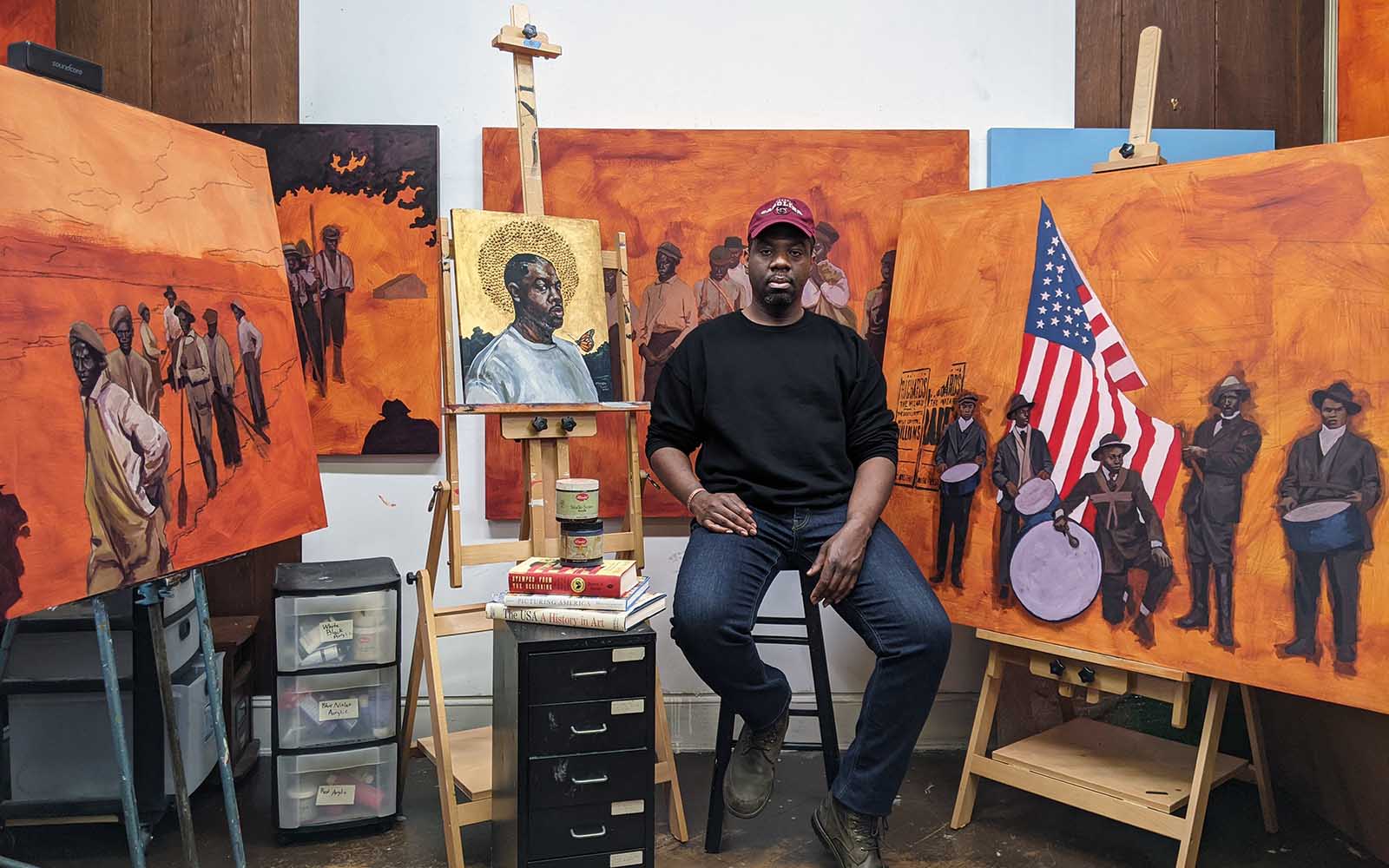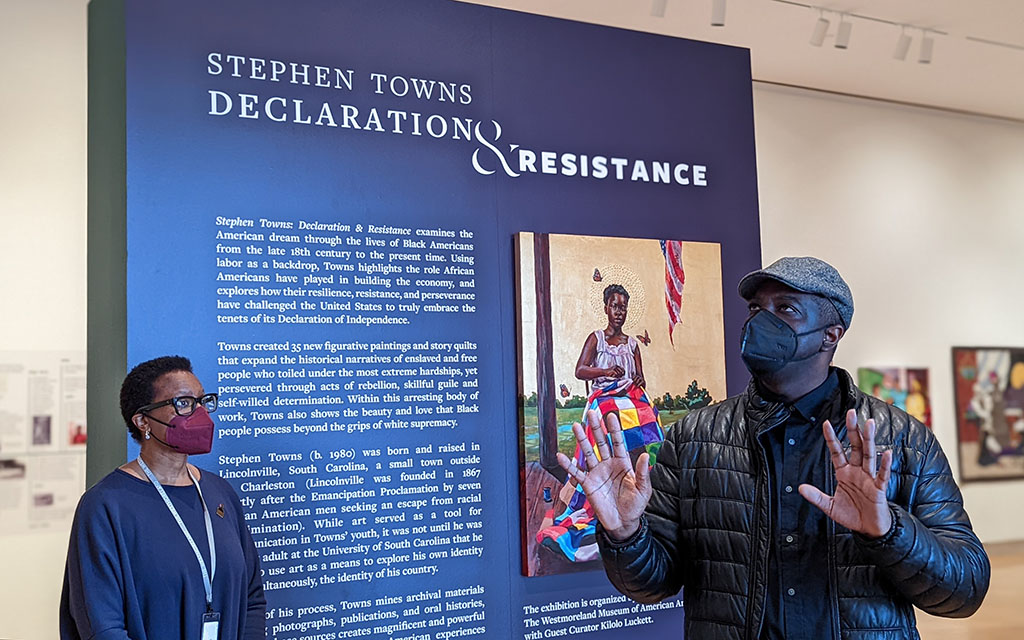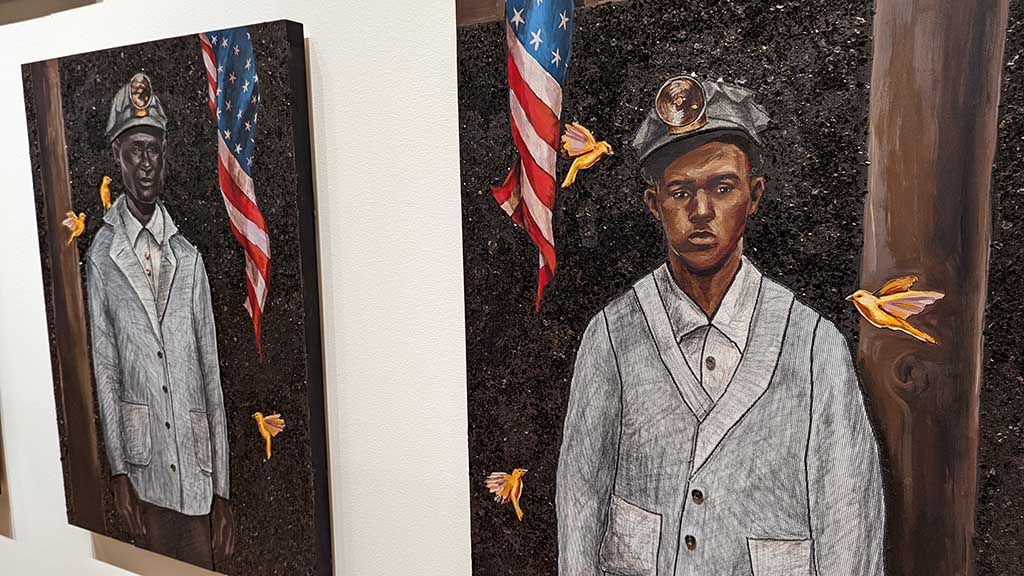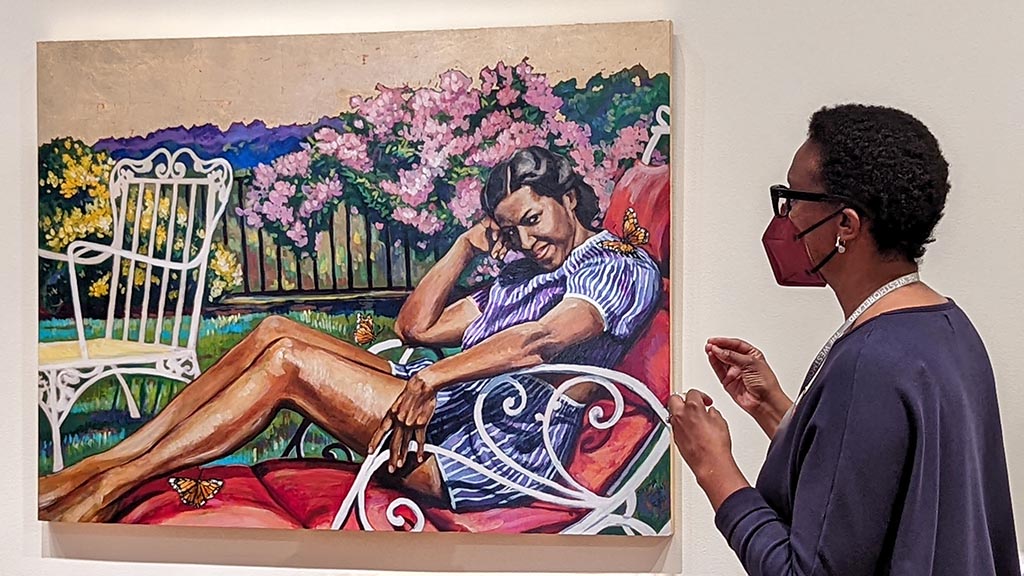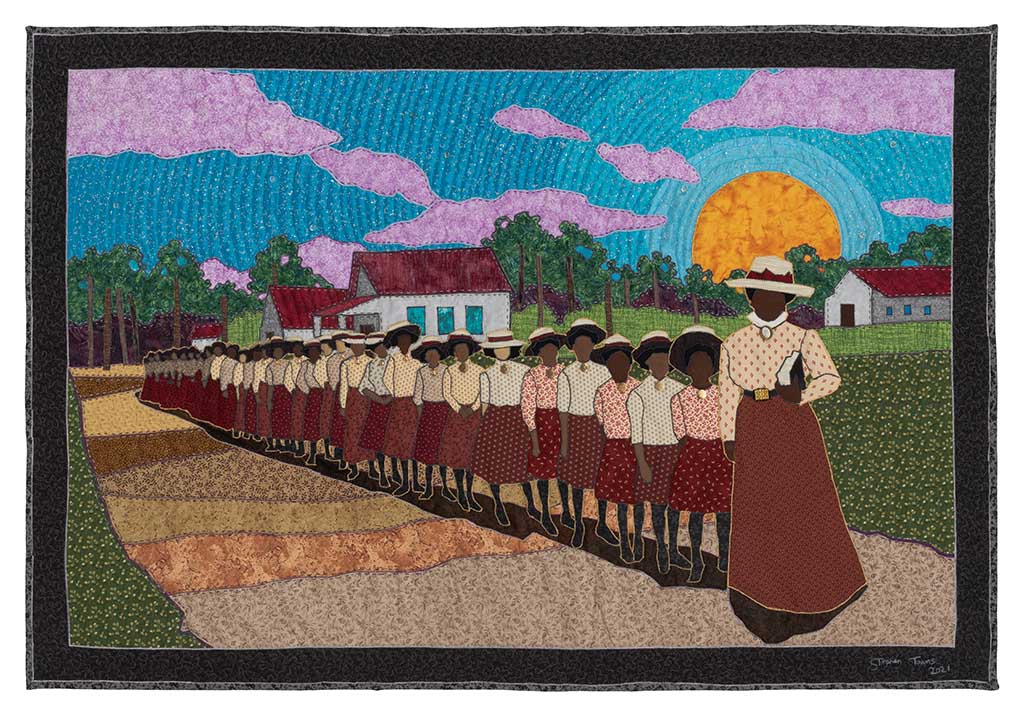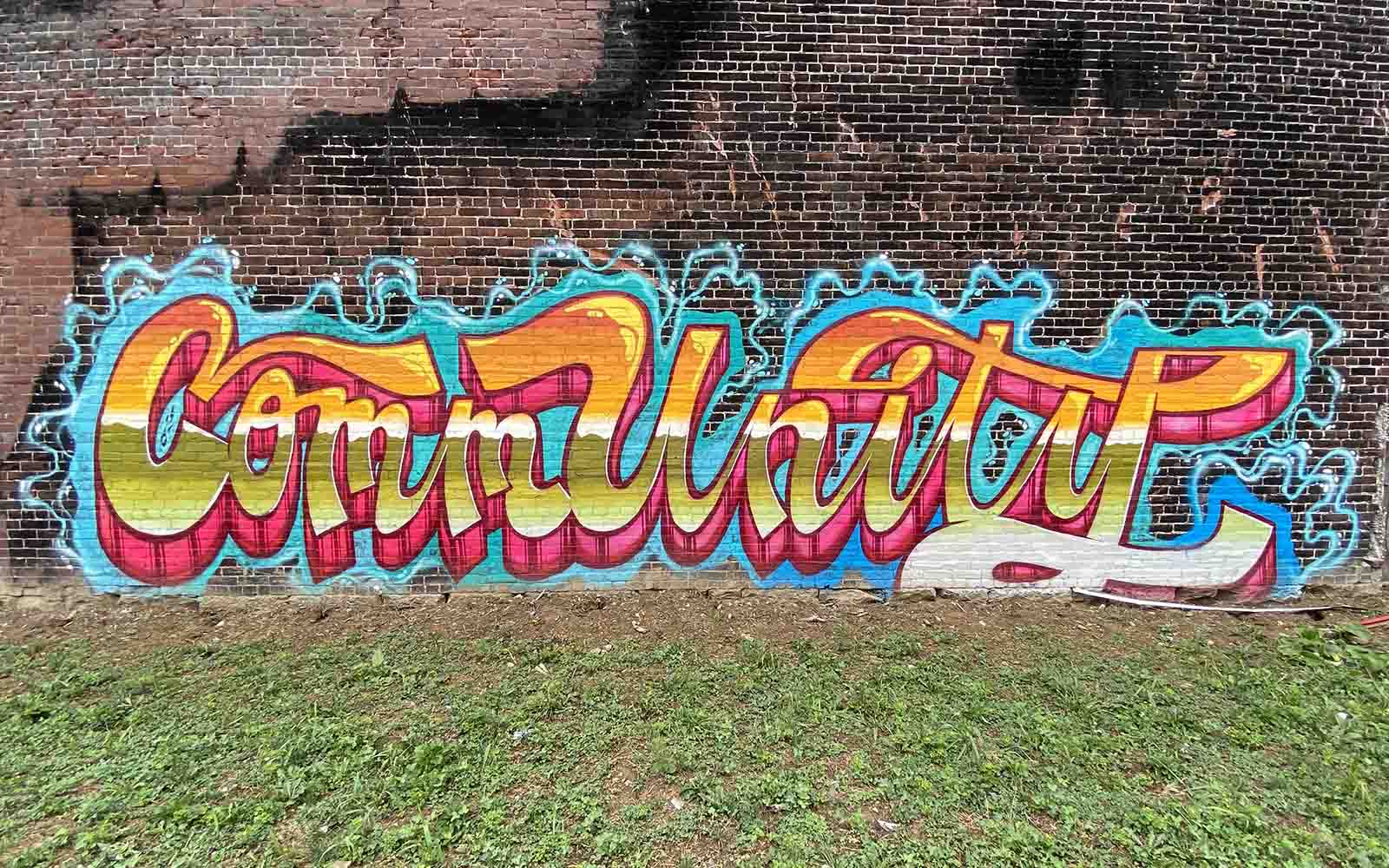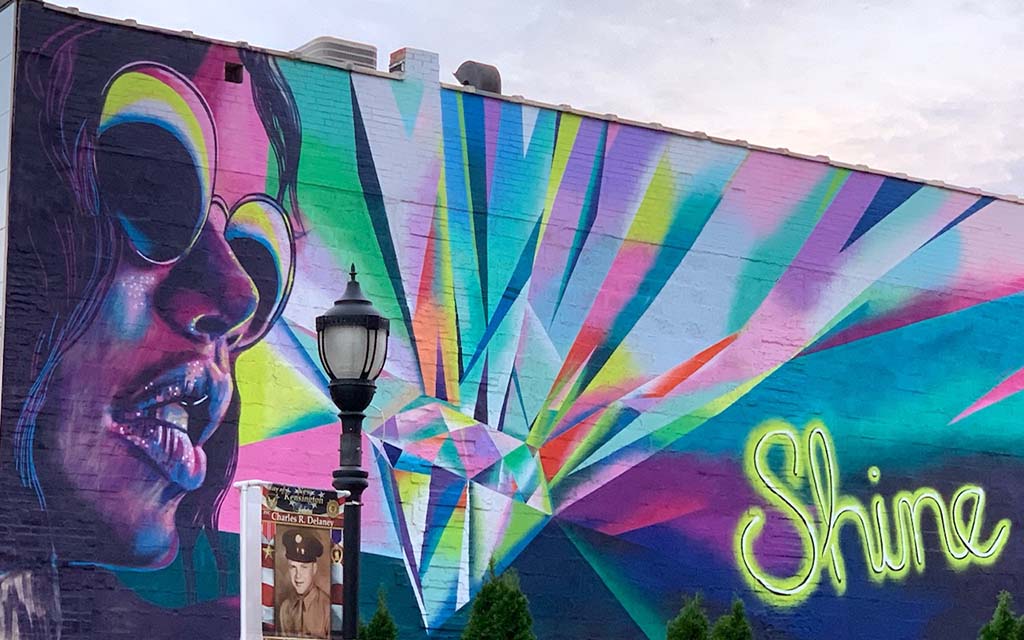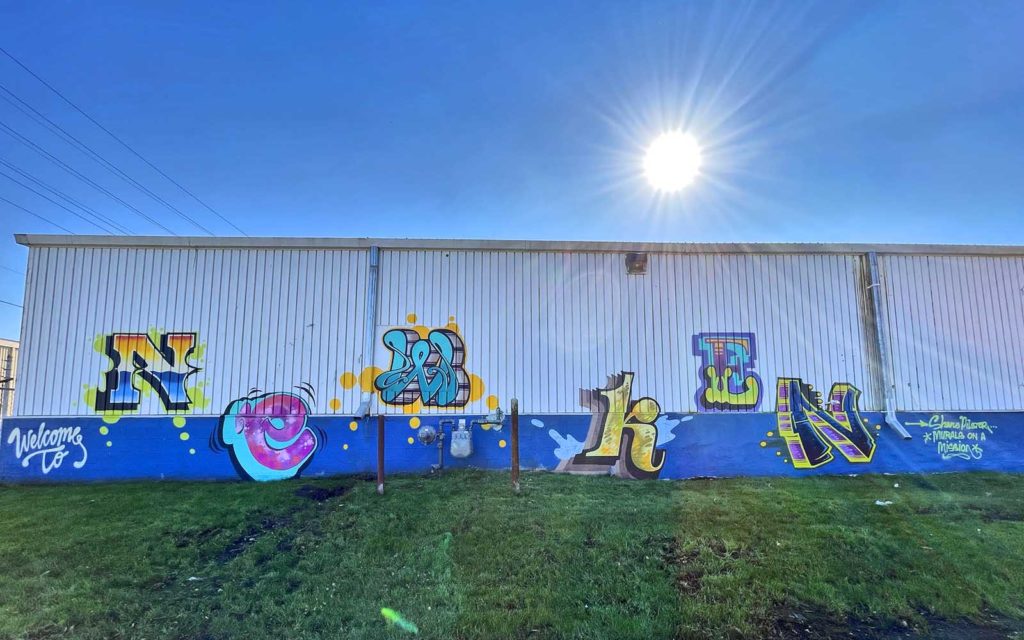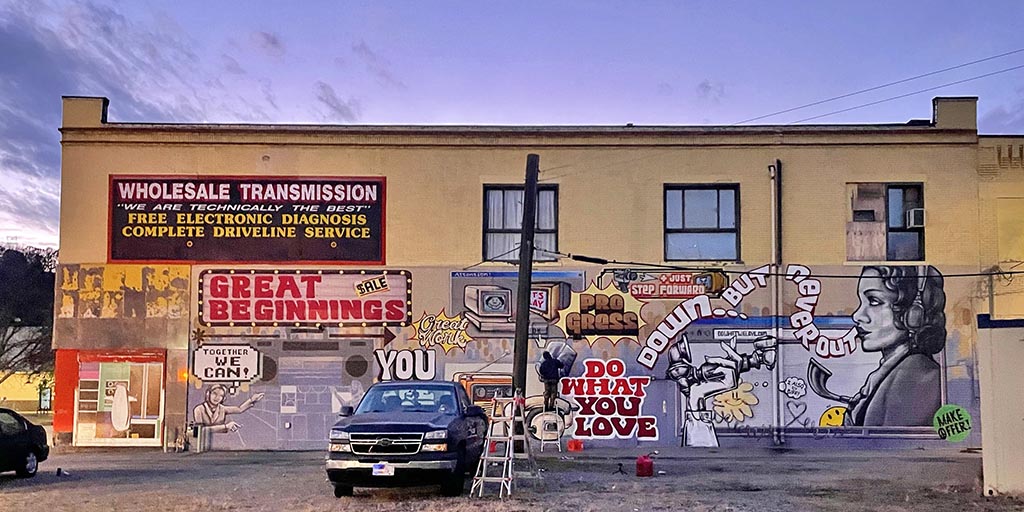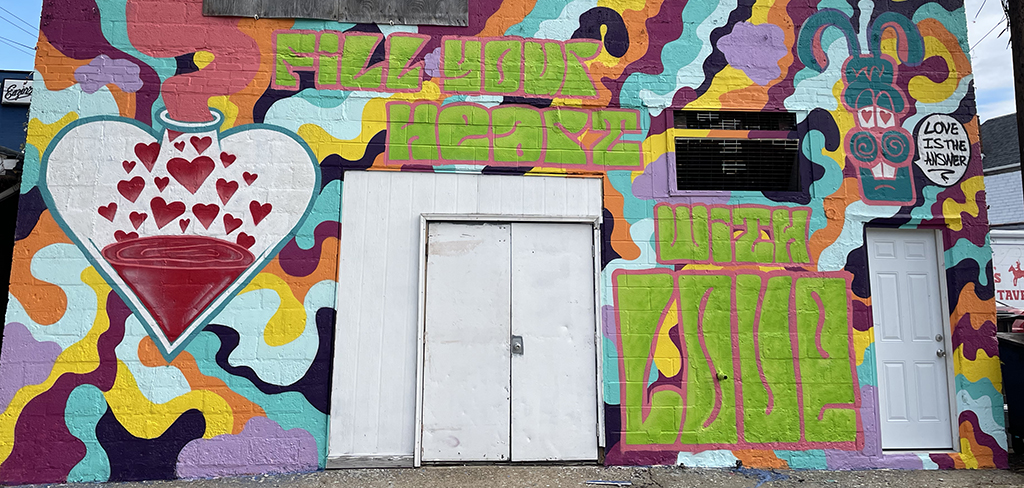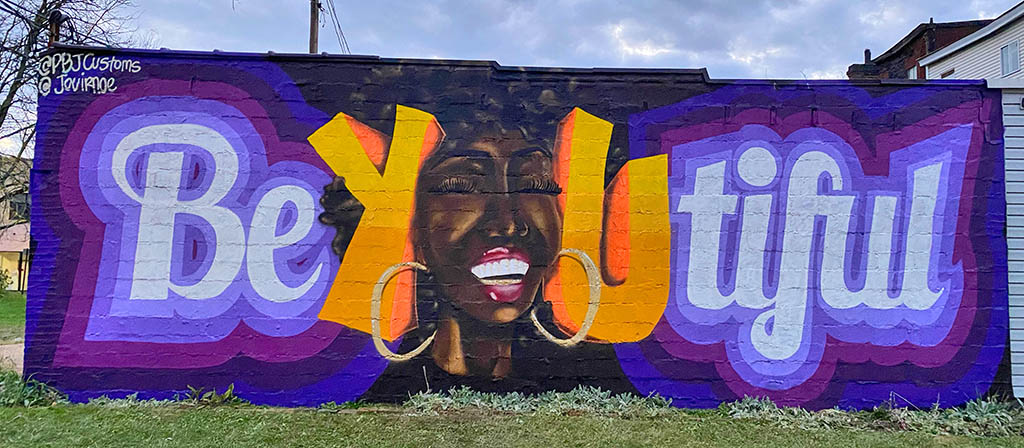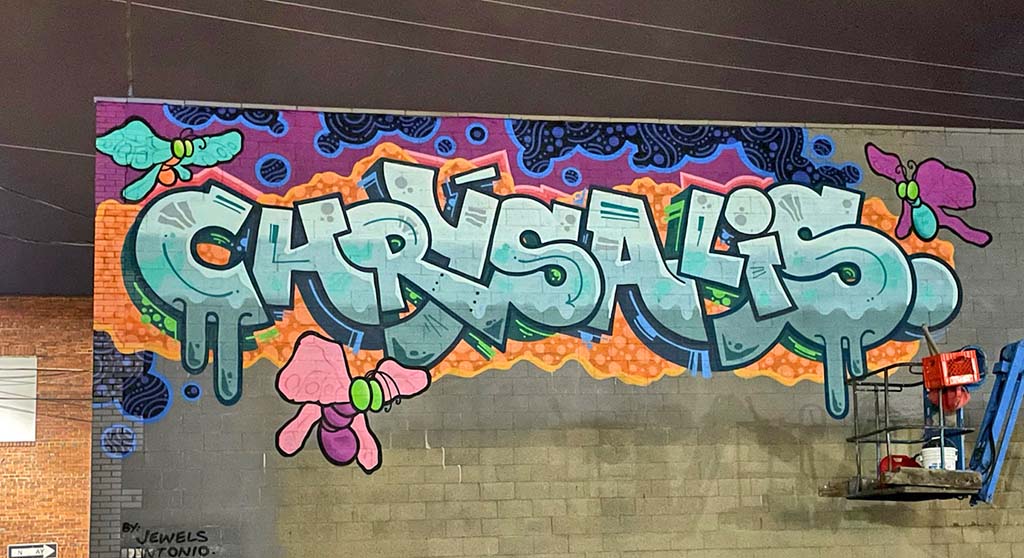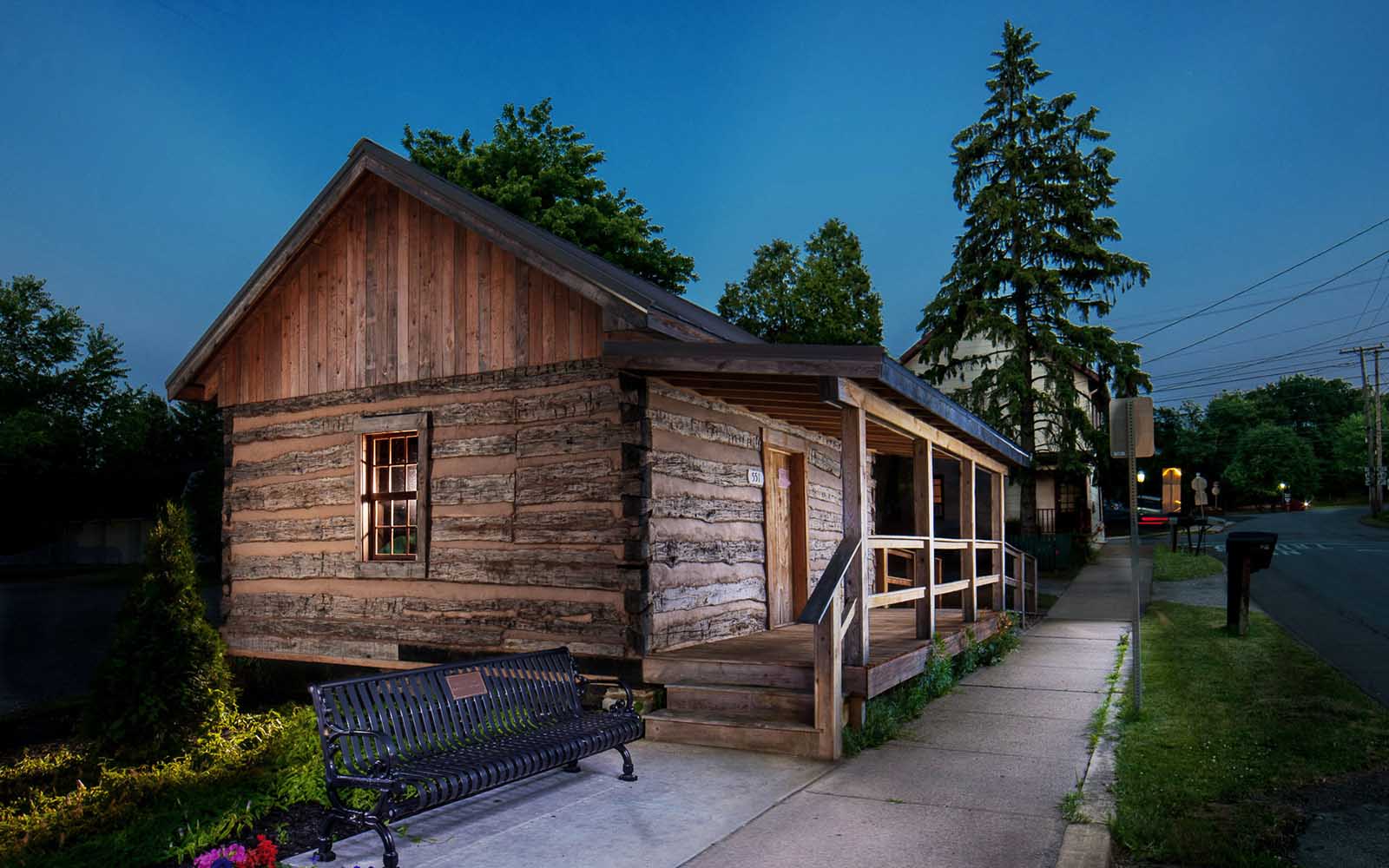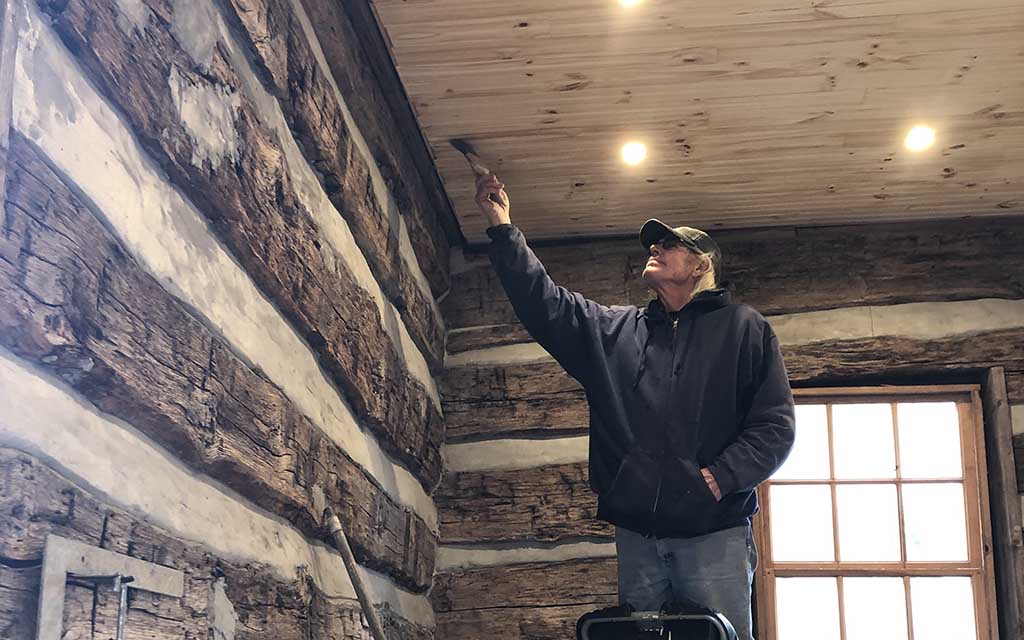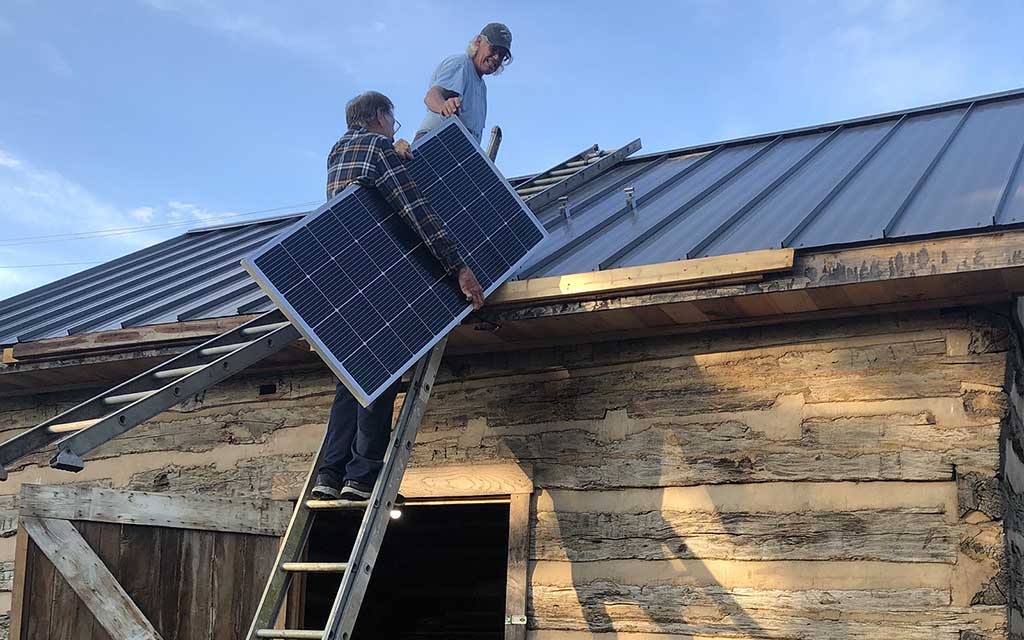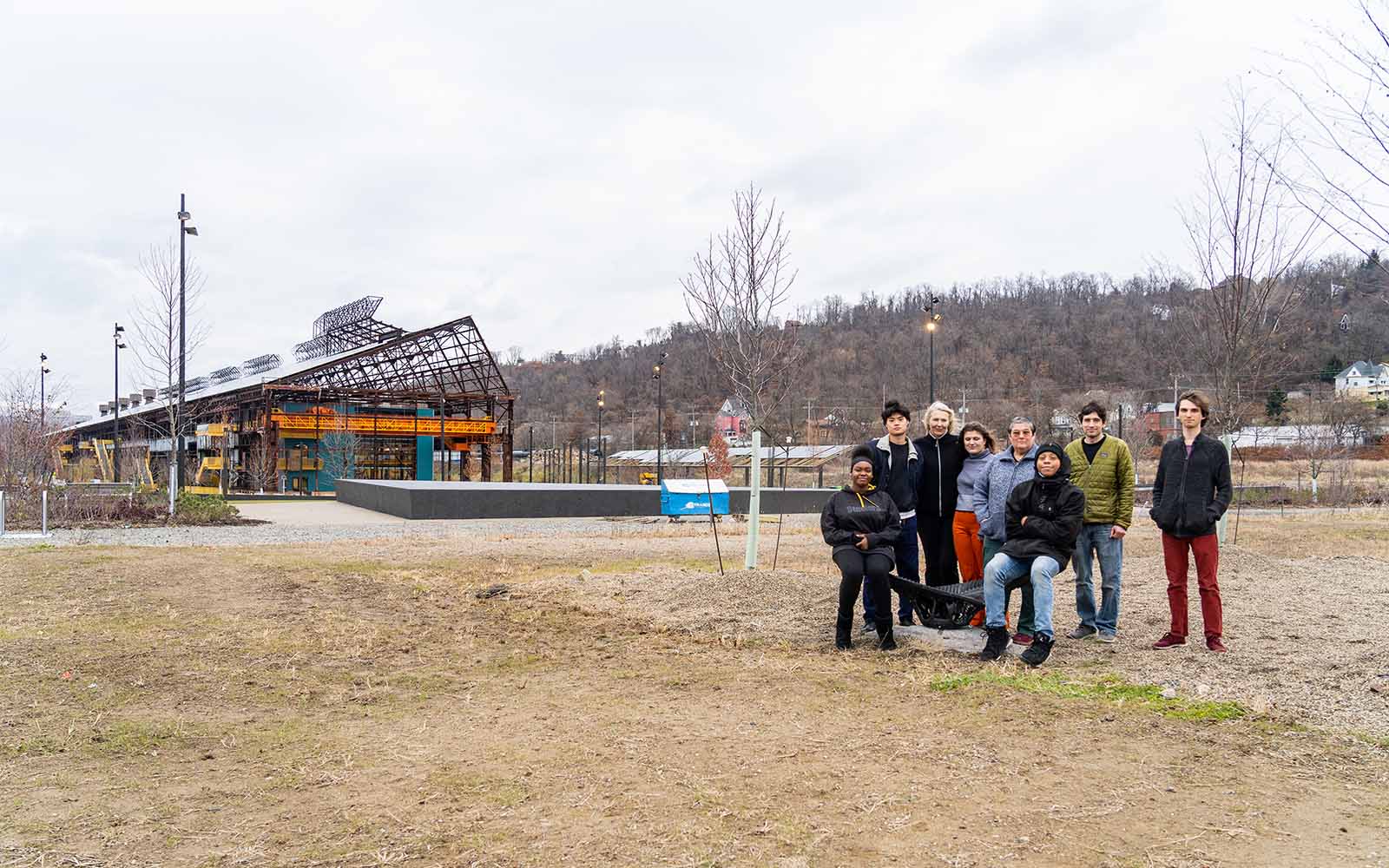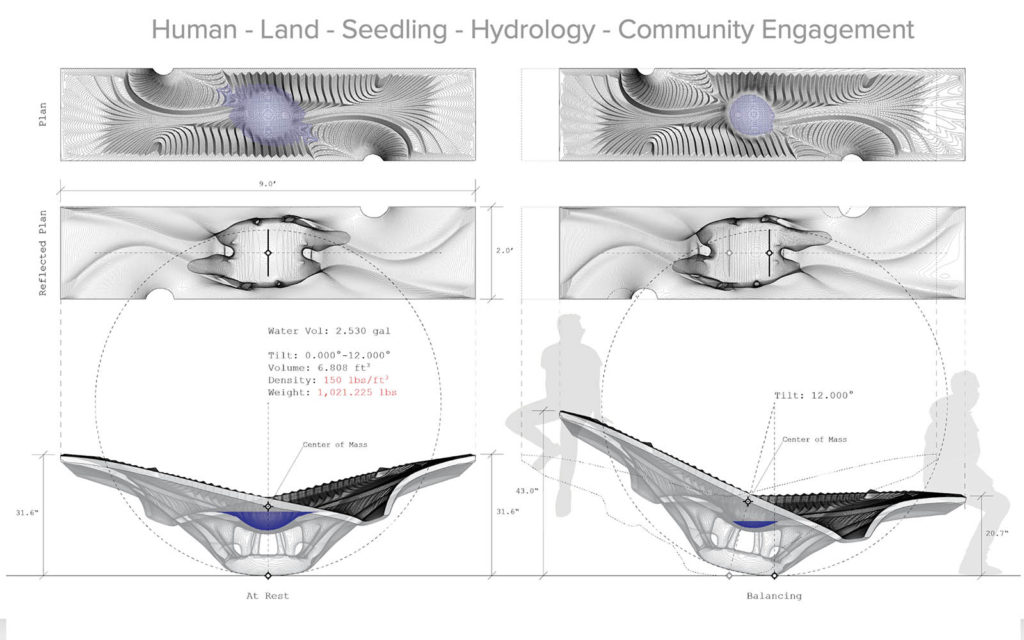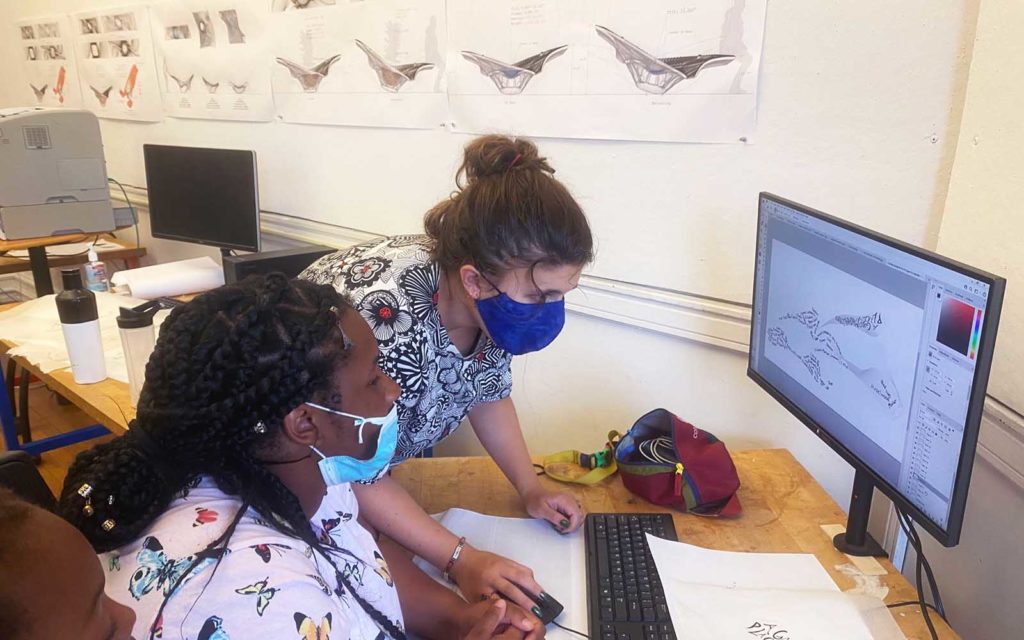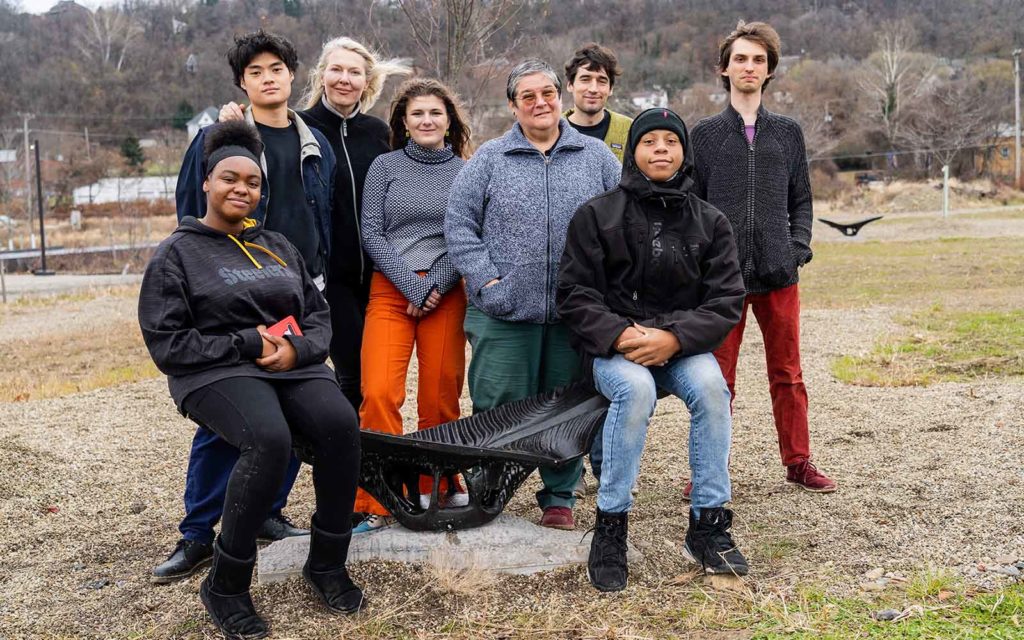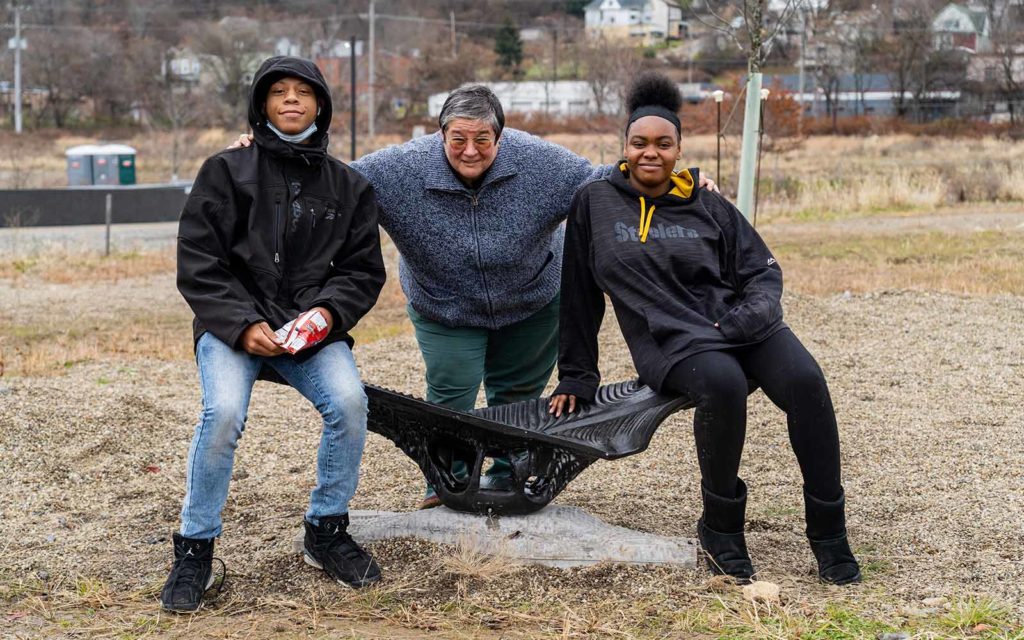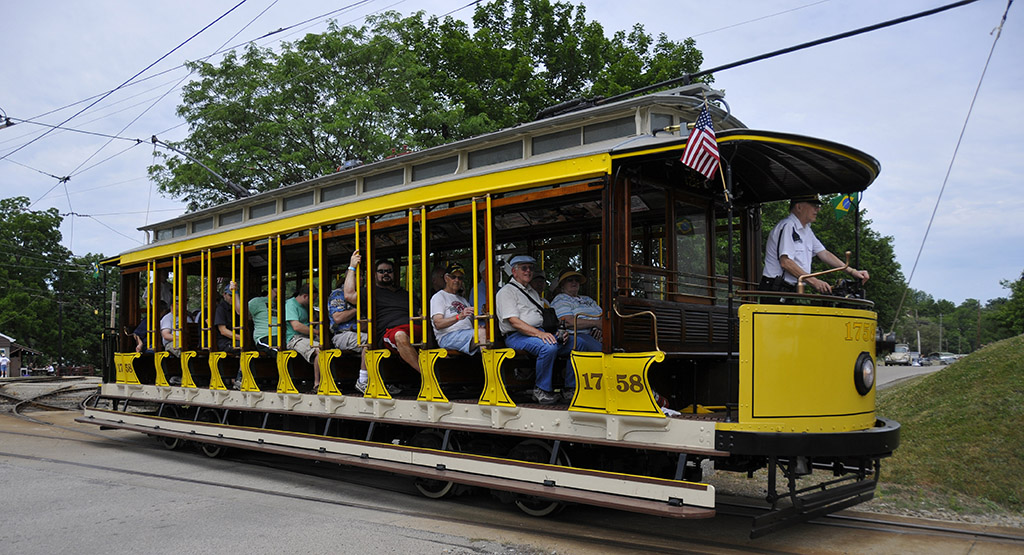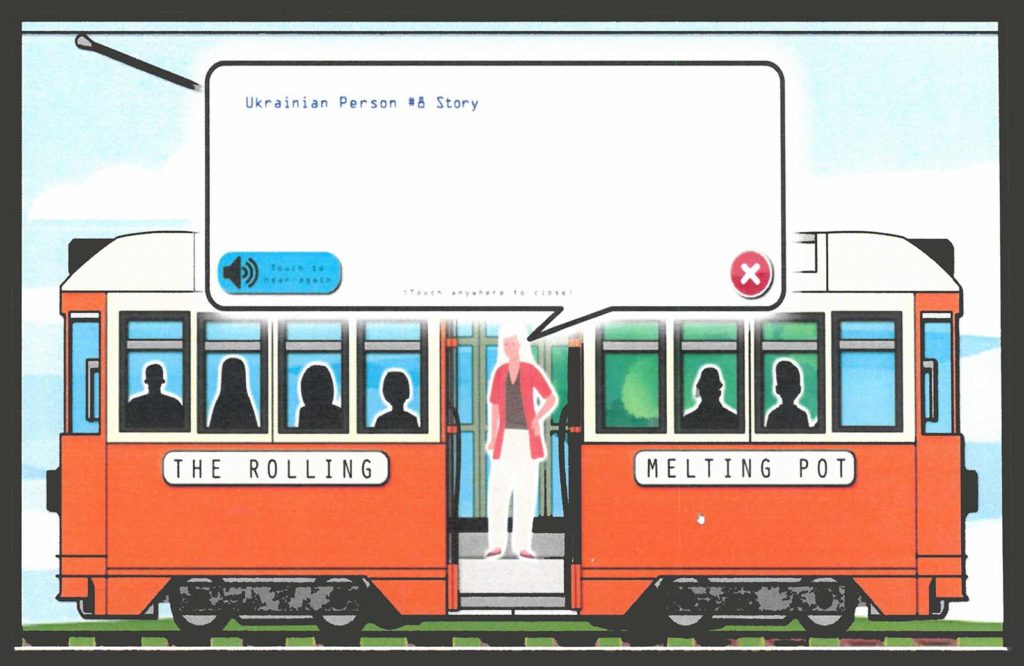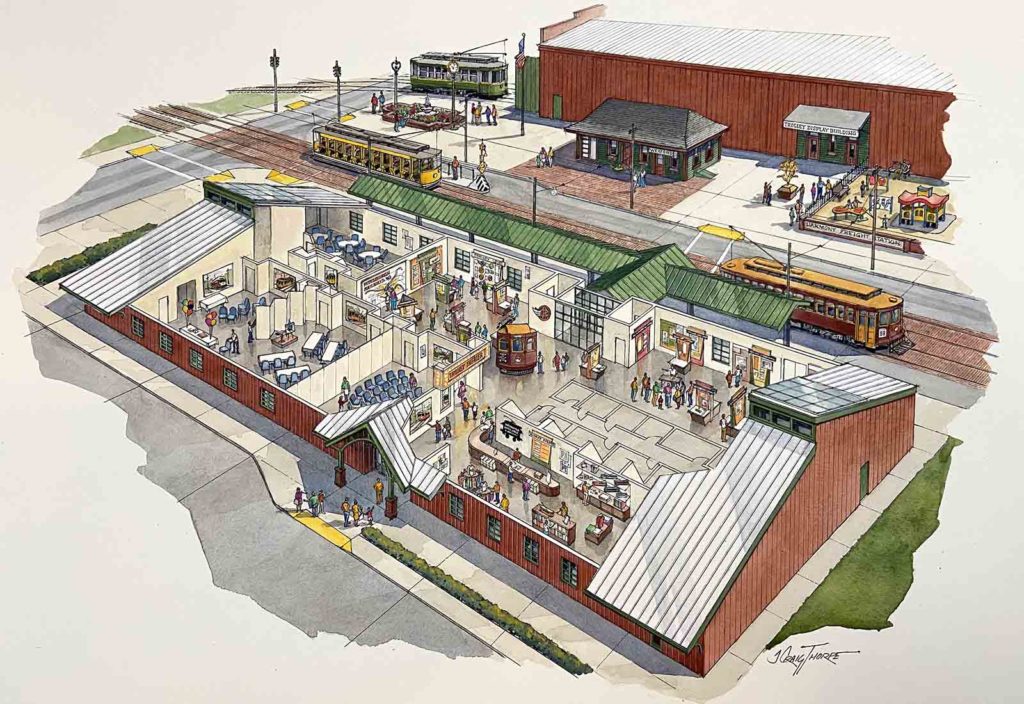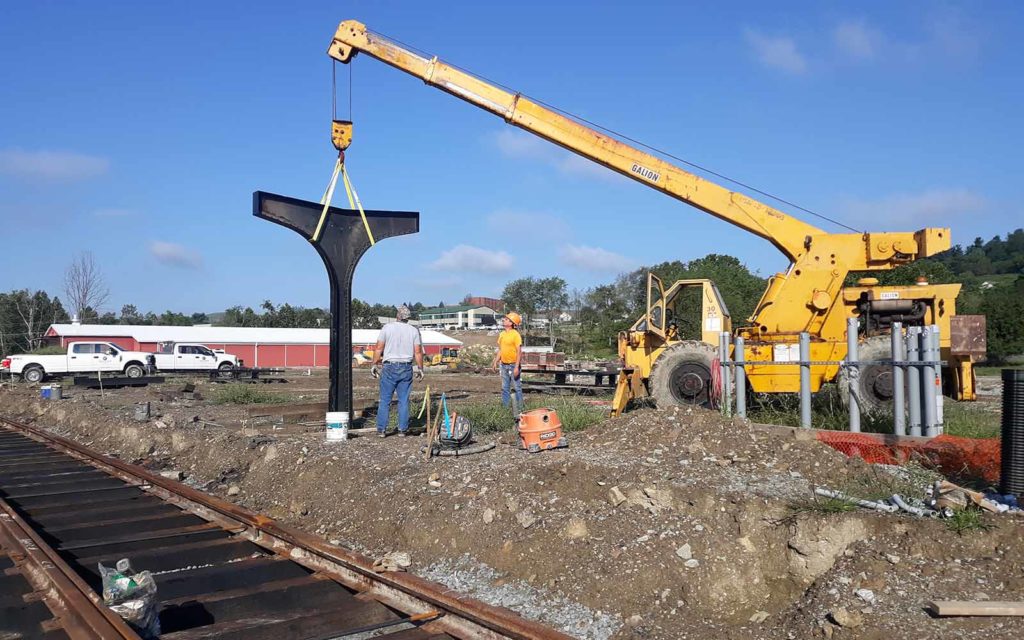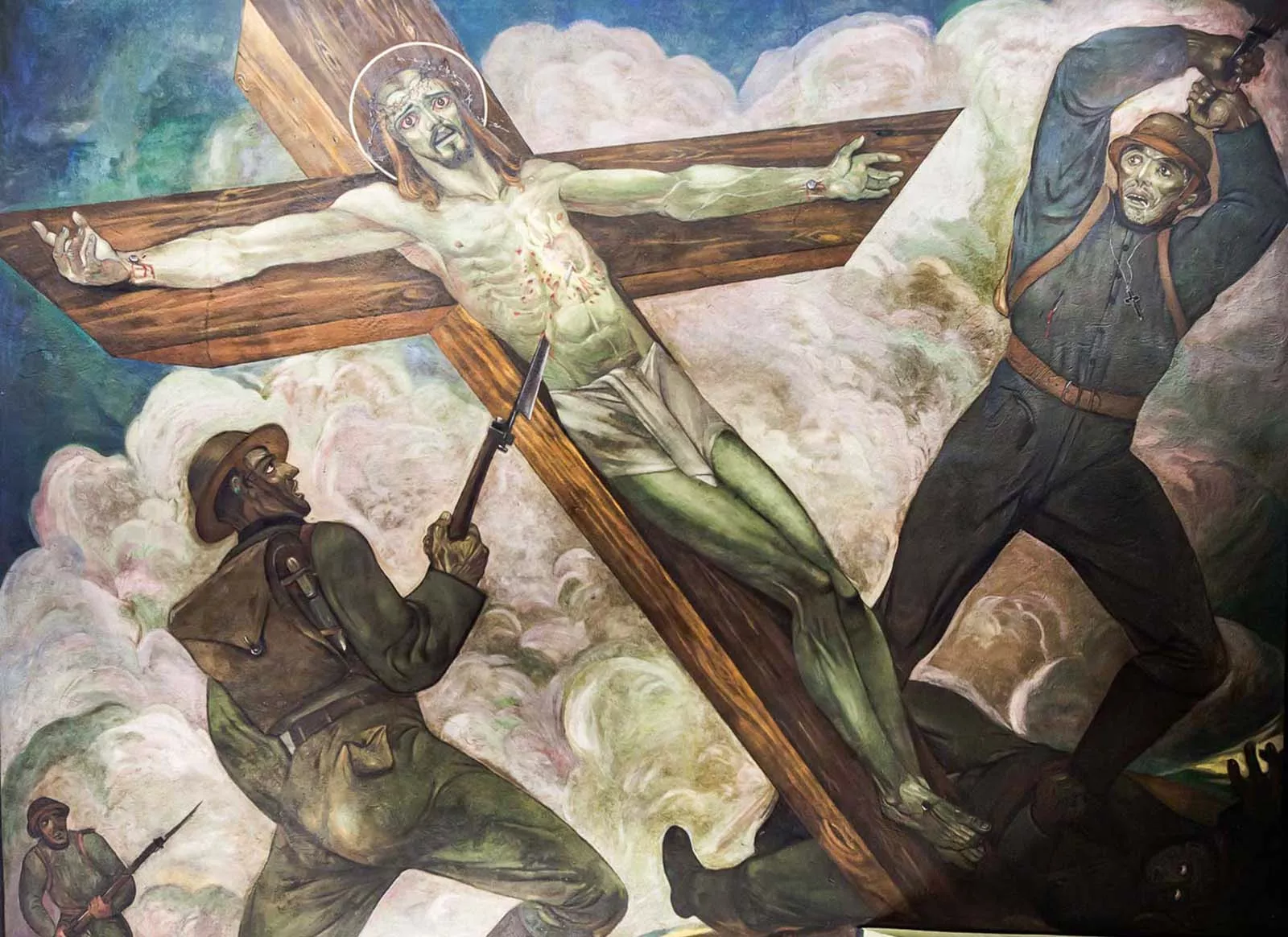
Christ on the Battlefield, a mural by Maxo Vanka at the St. Nicholas Croatian Catholic Church in Millvale, PA.
Community Spotlight
The Community Spotlight series features the efforts Rivers of Steel’s partner organizations, along with collaborative partnerships, that reflect the diversity and vibrancy of the communities within the Rivers of Steel National Heritage Area.
By Gita Michulka, Contributing Writer
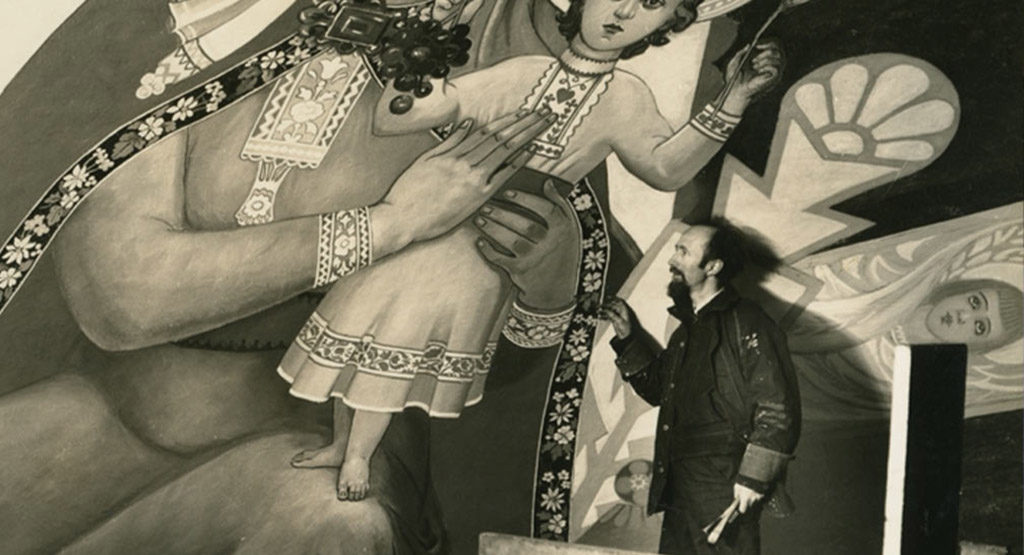
A photograph of Maxo Vanka, paint brushes in hand.
Maxo Vanka: Preserving the Immigrant Experience
If you drive through any one of the small boroughs and towns that sit immediately adjacent to Pittsburgh along its three rivers, you will pass countless churches that dot the neighborhoods like beacons. These churches sprung up as communities were developed by the immigrants who flocked to the region at the height of the industrial revolution, and many have lasted into the century that has followed as permanent mainstays of the Steel City.
One particular church in Millvale, Pennsylvania, is adorned with over twenty-five larger-than-life murals that depict the immigrant experience fused with themes of faith, war, cultural identity, and social justice. The Society to Preserve the Millvale Murals of Maxo Vanka (SPMMMV) hopes their conservation efforts will allow these timeless works of art to last into another century at least.
Maxo Vanka was a Croatian-born artist who arrived in the United States in 1934 after fleeing Europe with his Jewish family as the Second World War was looming. He visited Pittsburgh in 1935 as part of a tour around industrial centers of America with writer Louis Adamic. While in town, he produced a number of works that were then shown publicly. Upon seeing the exhibition, Father Zagar, a priest from St. Nicholas Croatian Catholic Church, felt Vanka should be the one to adorn the interior walls of their house of worship. Zagar later connected with Vanka through Adamic and invited him back to St. Nicholas to consider the commission in early 1937.
The Vanka murals were painted during two periods of time in 1937 and 1941, and include images of Mary, Queen of Croatia; the four Evangelists; the Crucifixion and Pieta; an Immigrant Mother Gives Her Sons for American Industry; and Croatians in America, which depicts a priest asking for a shovel—a symbol of labor—to be blessed by Mary. Vanka called these works his “gift to America” and their themes were prominent and pointed and are still relevant today.
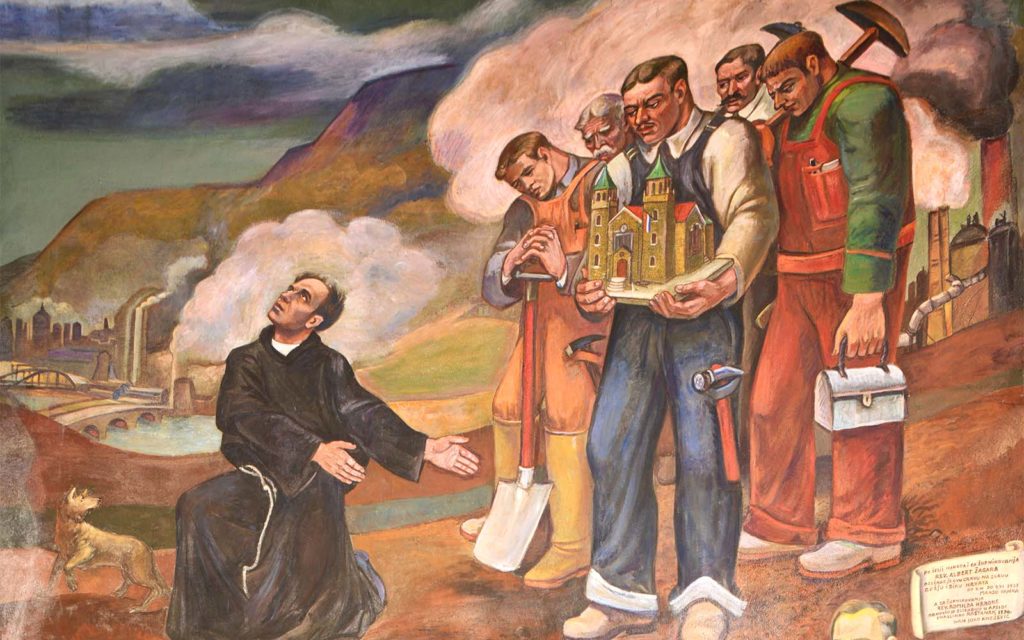
A priest appeals to Mary, seeking a blessing on the shovel—a symbol of labor—one refection of Vanka’s perspective on the immigrant experience in America.
The Conservation
An interest in raising public awareness of the murals’ regional and cultural significance beyond the church community prompted the founding of the SPMMMV in 1991. Their efforts led to a increased community engagement and the start of a successful donation campaign to begin conservation of the murals in 2009.
“A lot of people are really surprised to find out that the murals are water soluble. They aren’t oil—they are something that will come immediately off the walls if you rub too hard,” notes Anna Doering, executive director of the SPMMMV. “They aren’t true fresco because the plaster was dry when they were painted, so you don’t have that embedded pigment.”
The conservation team is led by Rikke Foulke, a fine arts conservator from Foulke Conservation, along with Ana Alba, Patty Buss, Cindy Fiorini, Jessica Keister, Patty Huss West, Cricket Harbek, and Rhonda Wozniak, who have completed twelve of the twenty-five murals to date.
“The really amazing thing,” says Doering, “is that we’ve been working with members of the team since the conservation started, so some members have been with us for now twelve, thirteen years, and are experts on the conservation of these hard-to-conserve murals.”
“The conservators are all accomplished and experts in their own right,” continues Doering. “They do a lot of independent projects and then they come together as a group to do this project,” which, she notes, allows them to accomplish more of the work at a time than if an individual or much smaller team was tasked with the project.
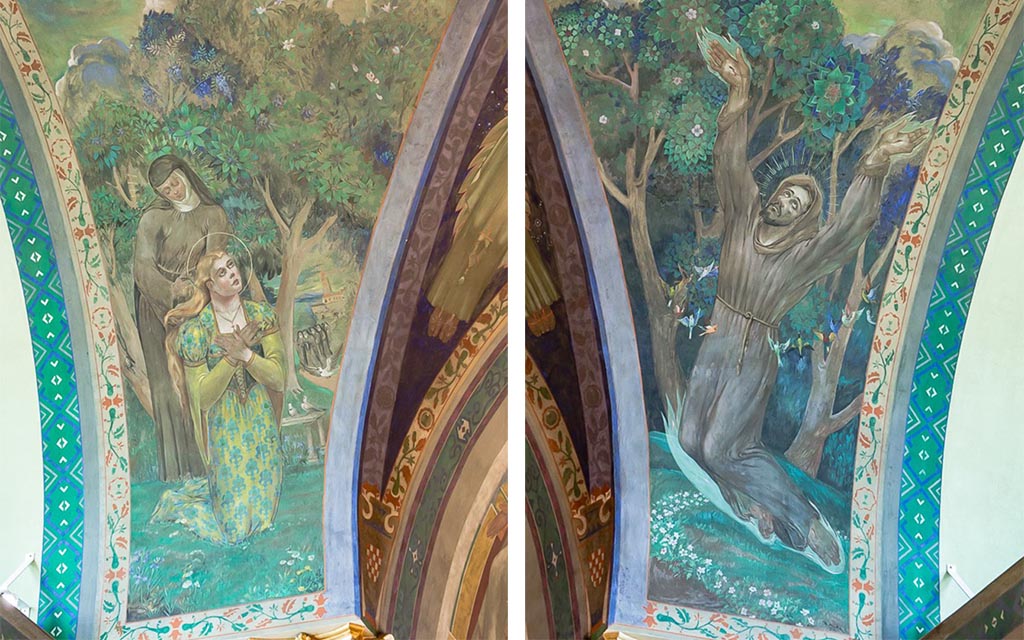
The conservation of the St. Claire and St. Francis murals are supported by a Rivers of Steel Mini-Grant.
Looking Ahead
After the team completed the mural Mary on the Battlefield in 2018, the Society paused to establish a Phase II scope of work for the remaining conservation.
“We don’t typically start conservation if we don’t have the full funding in place to complete the project. We want to make sure that we can keep going once we get started,” says Doering.
In 2021, SPMMMV utilized a Keystone Planning Grant, with support from the Pennsylvania Historical and Museum Commission and the Heinz Endowments, to complete a historic structure report on St. Nicholas and to develop the scope, timeline, and cost for Phase II of conservation and lighting.
With these plans in place, the Society is ready to jump back in.
“To kick off this next phase, we sought funding from Rivers of Steel’s Mini-Grant Program to do the conservation of the organ loft murals, St. Francis and St. Clare,” Doering says. “Part of the reason that we asked for the support is because it’s kind of a preview for phase two of conservation, and a way to begin reengaging the public with the murals and the work. The ‘before and after’ photos from conservation are dramatic, and it’s something that people can instantly see the positive impact of the conservation and their financial investments.”
Doering happily notes that even after the necessary lull in tangible progress, folks were still eager to help continue the work. The Mini-Grant funding was matched by the generosity of just a small group of individuals, including Vanka’s granddaughter and her husband. Donors included Julia Bubanovich, Christie Clayton and Michael Burkitt, Marya and John Halderman, Janet Kafka, John A. Martine, Melissa McSwigan and Robert Raczka, Jennifer Novotny Mulrooney, Rita Perstac, Julia Royall, and Barb Spelic.
Paint the Town Maxo
With conservation underway once again, Doering and team are looking forward to bigger and more inclusive ways of engaging the public with Vanka’s timeless murals.
May 19th will kick off a new era for the organization. Their Paint the Town Maxo event on that day will serve not only as a fundraiser, but also as a chance for SPMMMV to elevate their educational programming as they expand on the murals’ universal themes of struggle, sacrifice, faith, and hope.
“One of the most exciting things about the event is that attendees will get a sense of our community engagement and outreach,” says Doering. “We’ll be unveiling new commissions on the issues of injustice, justice, the immigrant experience, and motherhood through Gift to America 2.0. It’s a contemporary take on Vanka’s themes, by local artists.”
Gift to America 2.0 features new work by Christiane Dolores, Max Gonzales, Maggie Negrete, and Cue Perry, and is curated by Corey Carrington. The exhibit will highlight local and national industrial history and the immigrant experience.
As she looks ahead at the work to come, Doering is eager not only for restarting the conservation of the nationally significant Vanka murals, but also for renewing relationships with supporters and sparking new public interest, engagement, and investment in the project.
“The murals really are a one-of-a-kind art treasure,” she says. “Conservation is a tested and compelling opportunity to build community interest, appreciation, and accountability for supporting historic preservation and heritage tourism in Pittsburgh and beyond.”
Learn more about the Maxo Vanka murals, Paint the Town Maxo, and Gift to America 2.0 at vankamurals.org.
About the Mini-Grant Program
Rivers of Steel’s Mini-Grant Program assists heritage-related sites and organizations as well as municipalities within the Rivers of Steel National Heritage Area to develop new and innovative programs, partnerships, exhibits, tours, and other initiatives. Funded projects support heritage tourism, enhance preservation efforts, involve the stewardship of natural resources, encourage outdoor recreation, and include collaborative partnerships. Through these efforts, Rivers of Steel seeks to identify, conserve, promote, and interpret the industrial and cultural heritage that defines southwestern Pennsylvania.
The Rivers of Steel National Heritage Area is one of twelve supported by the Pennsylvania Department of Conservation and Natural Resources (DCNR). Funding is provided via DCNR’s Community Conservation Partnerships Program and the Environmental Stewardship Fund to Rivers of Steel, which administers the Mini-Grant Program. The Society to Preserve the Millvale Murals of Maxo Vanka is one of eight organizations who received Mini-Grant funding through this program in 2022.
 Gita Michulka is a Pittsburgh-based marketing and communications consultant with over 15 years of experience promoting our region’s arts, recreation, and nonprofit assets.
Gita Michulka is a Pittsburgh-based marketing and communications consultant with over 15 years of experience promoting our region’s arts, recreation, and nonprofit assets.
If you’d like to know more about community projects supported by the Mini-Grant Program, read Gita’s recent article about the Steel Valley Trail.
Photos are courtesy of The Society to Preserve the Millvale Murals of Maxo Vanka.

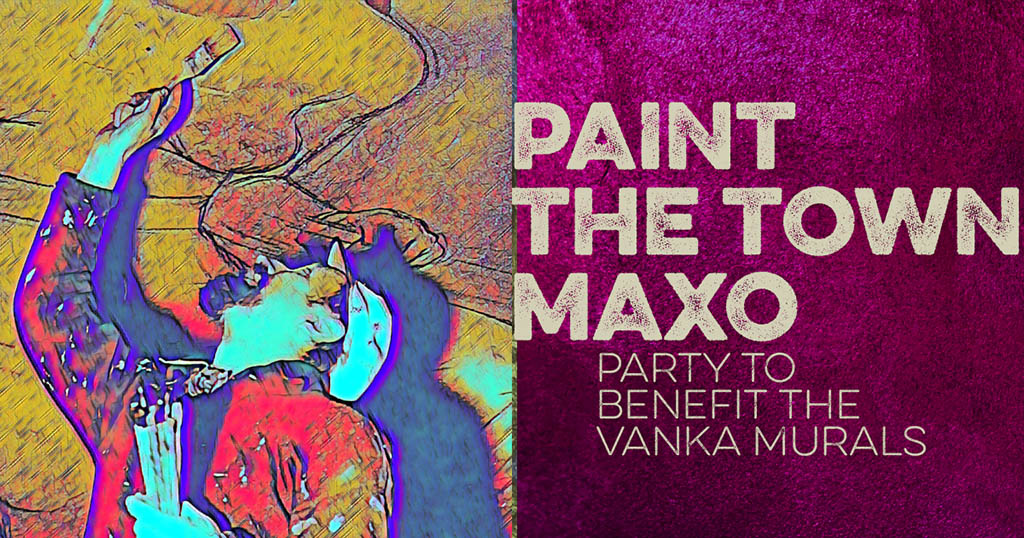
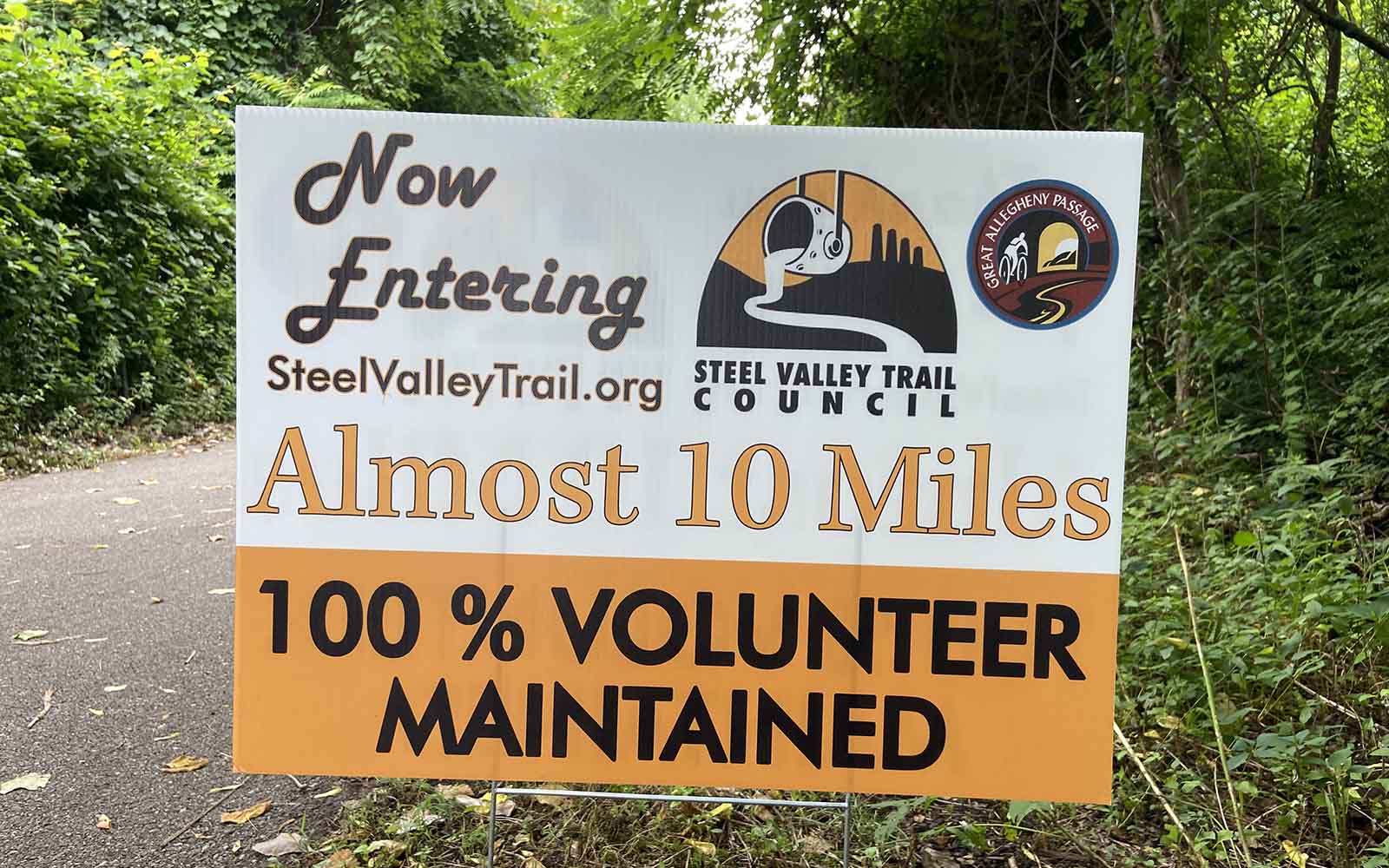
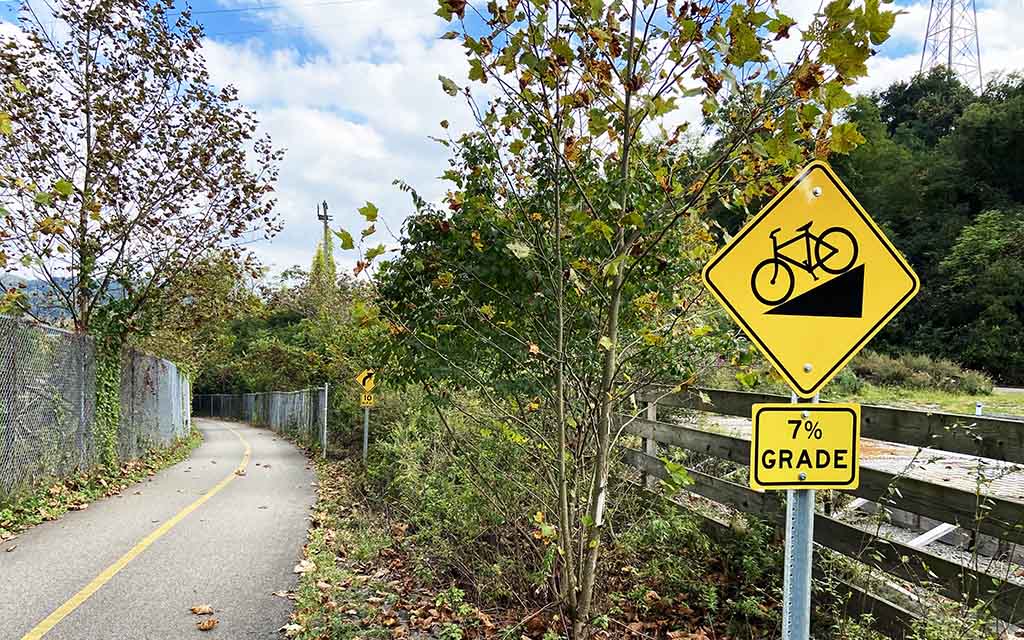
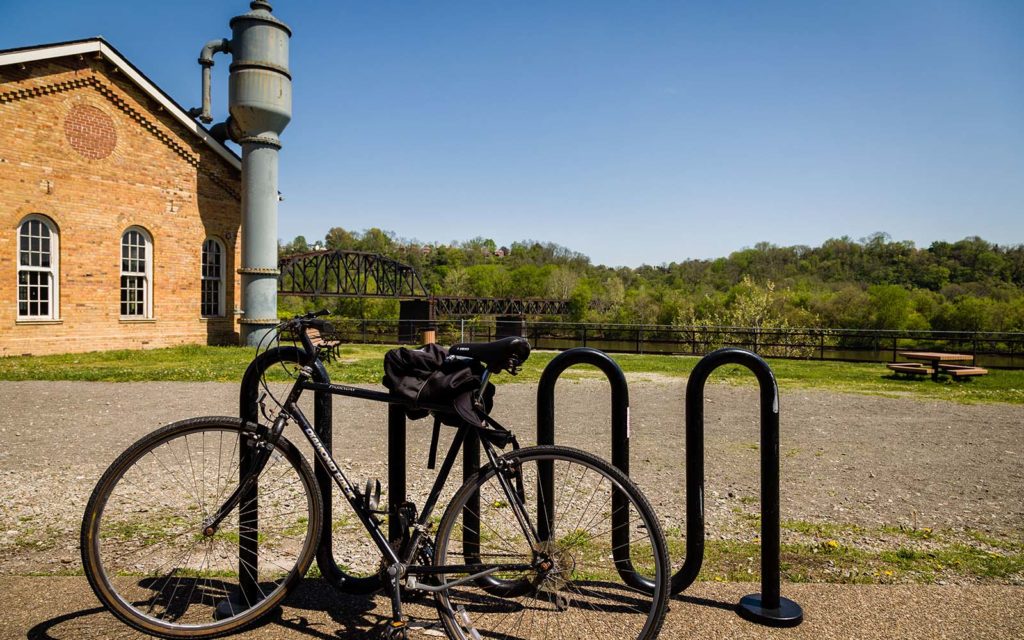

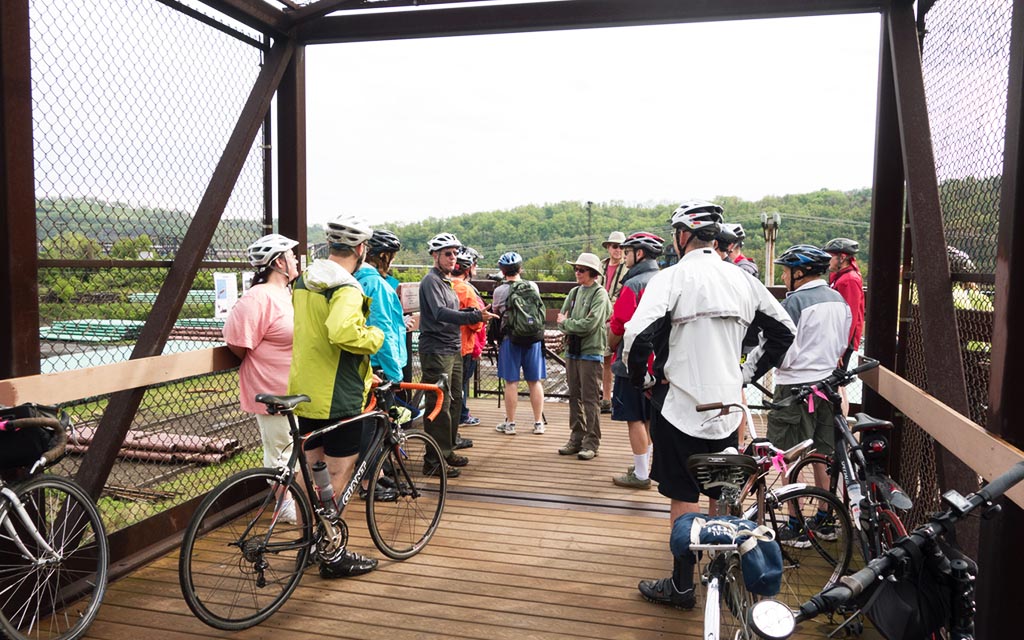


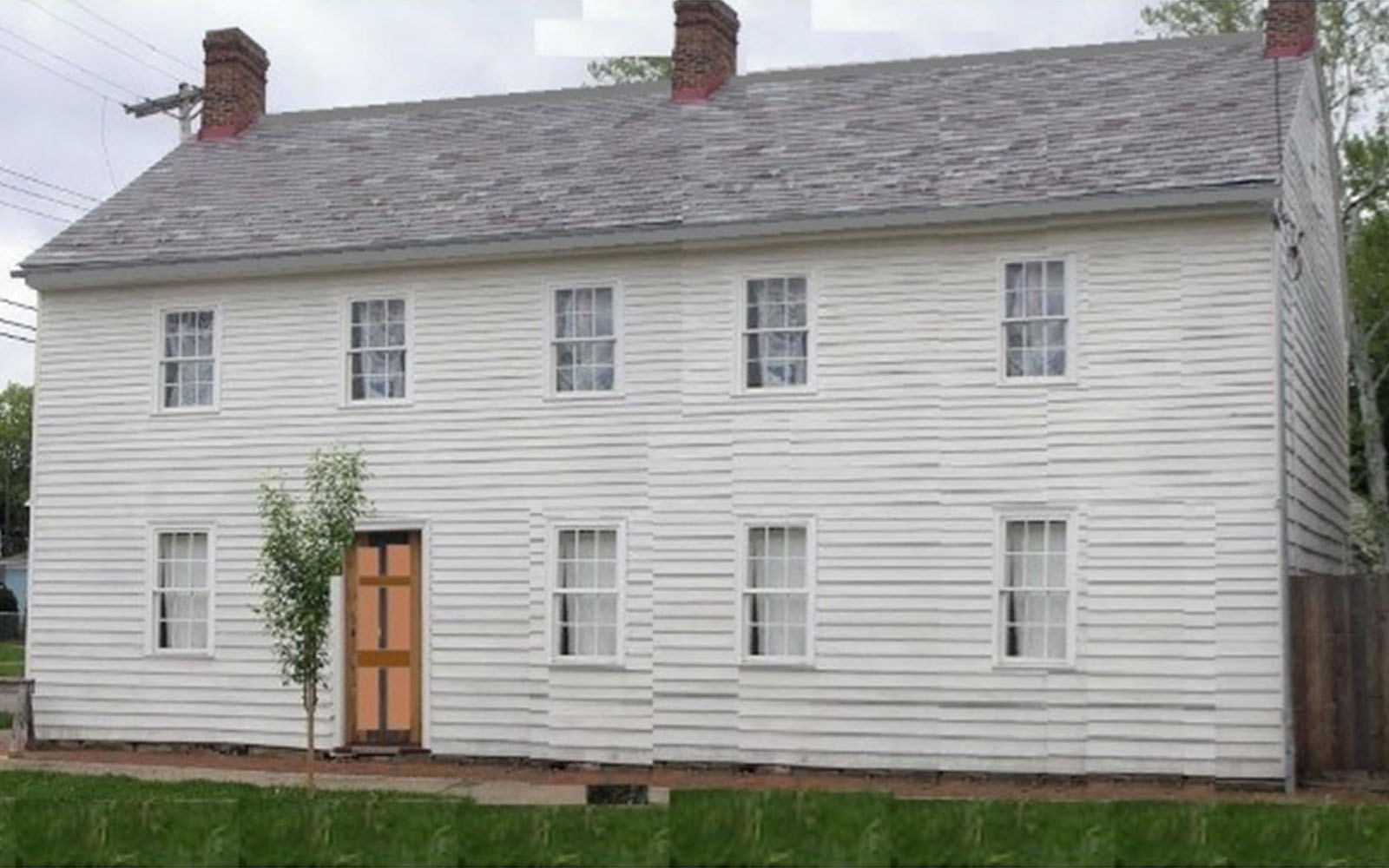
 The Ambridge Bicentennial House: A Community Preservation Project
The Ambridge Bicentennial House: A Community Preservation Project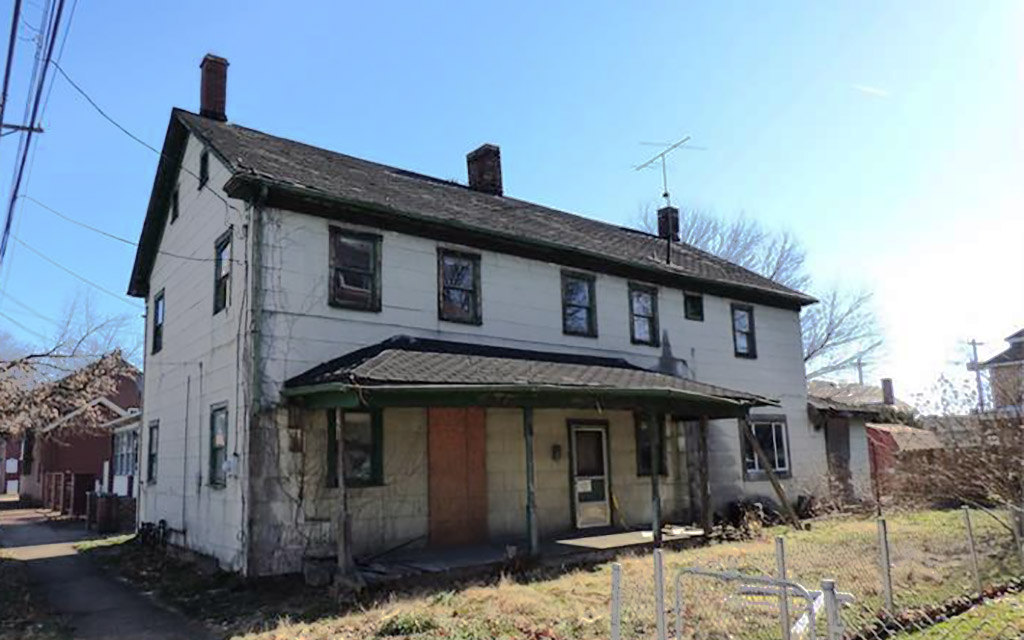
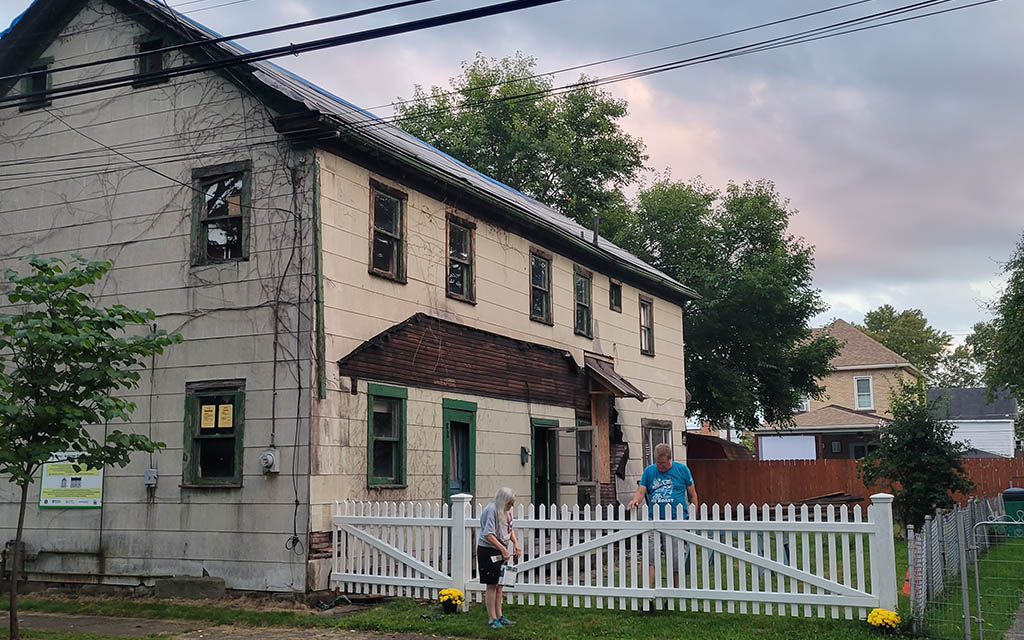
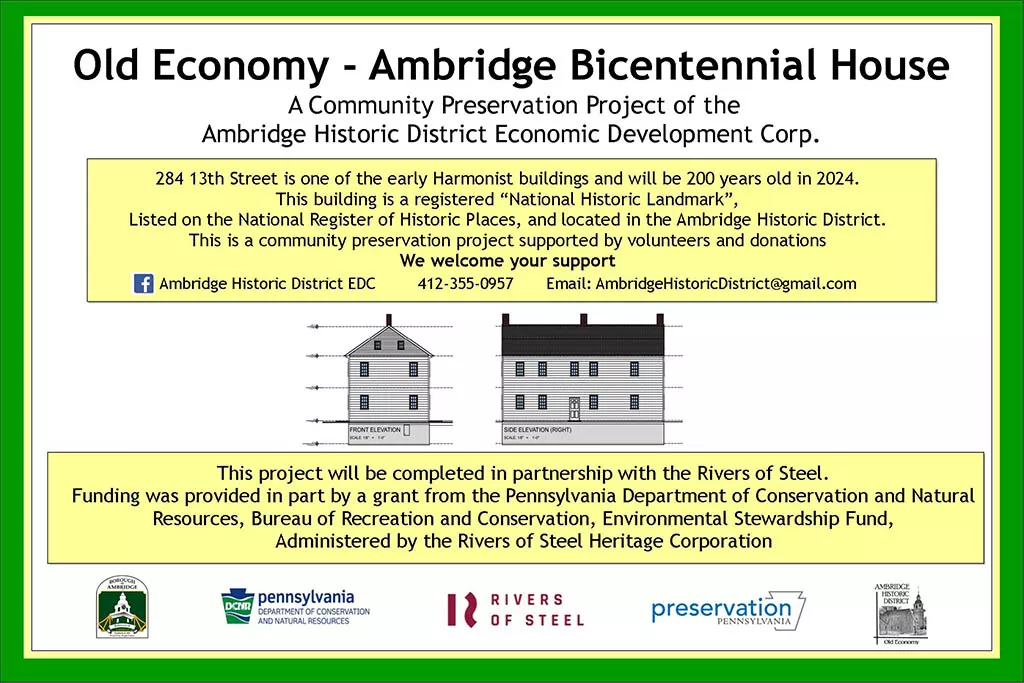
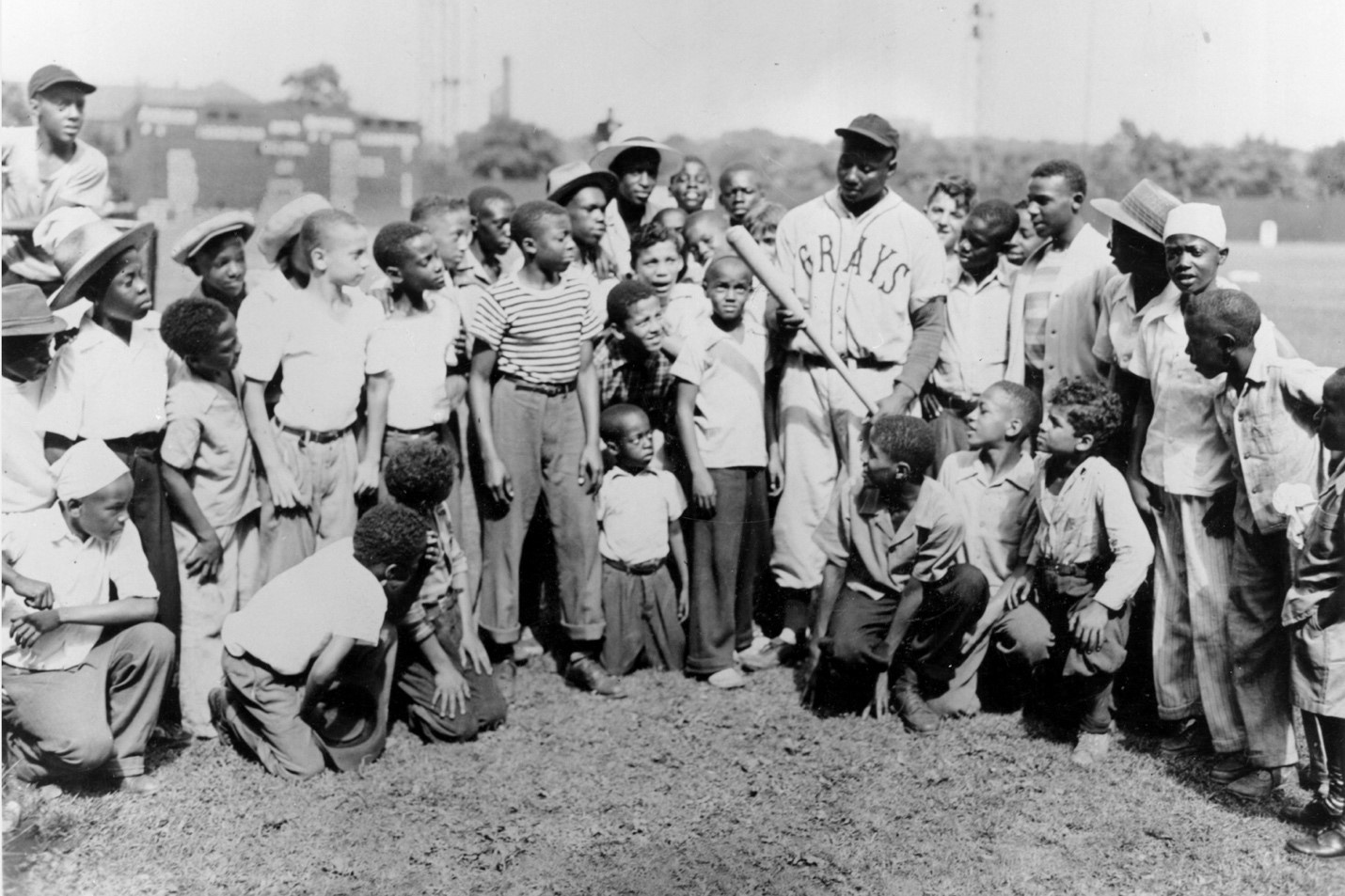
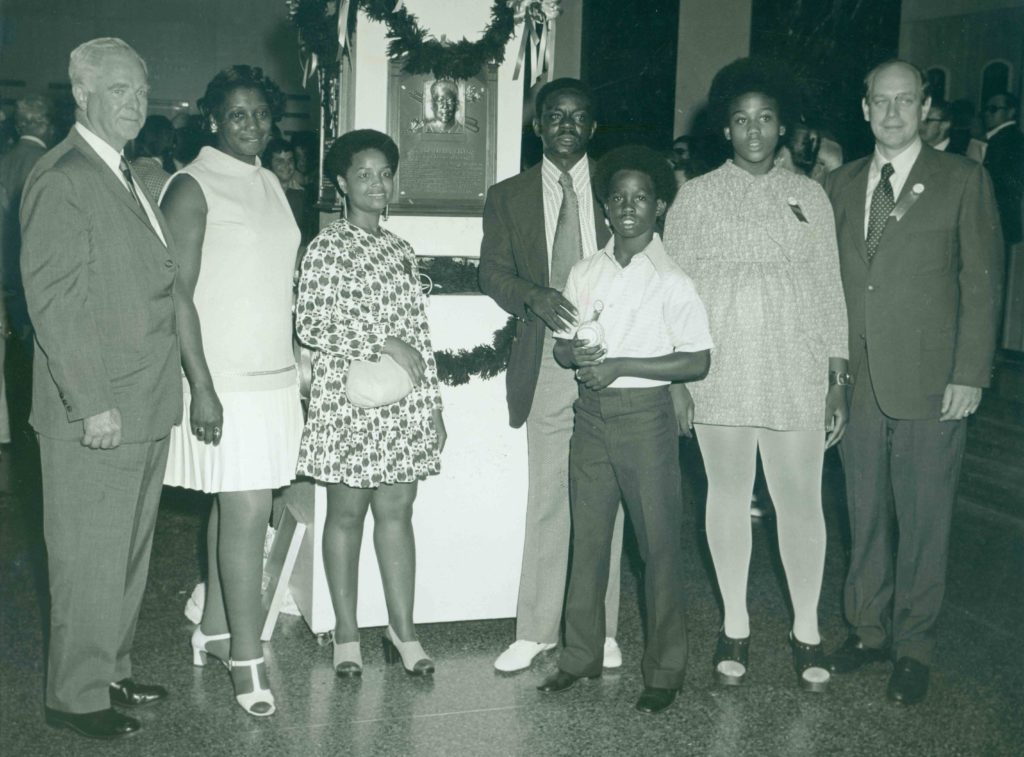
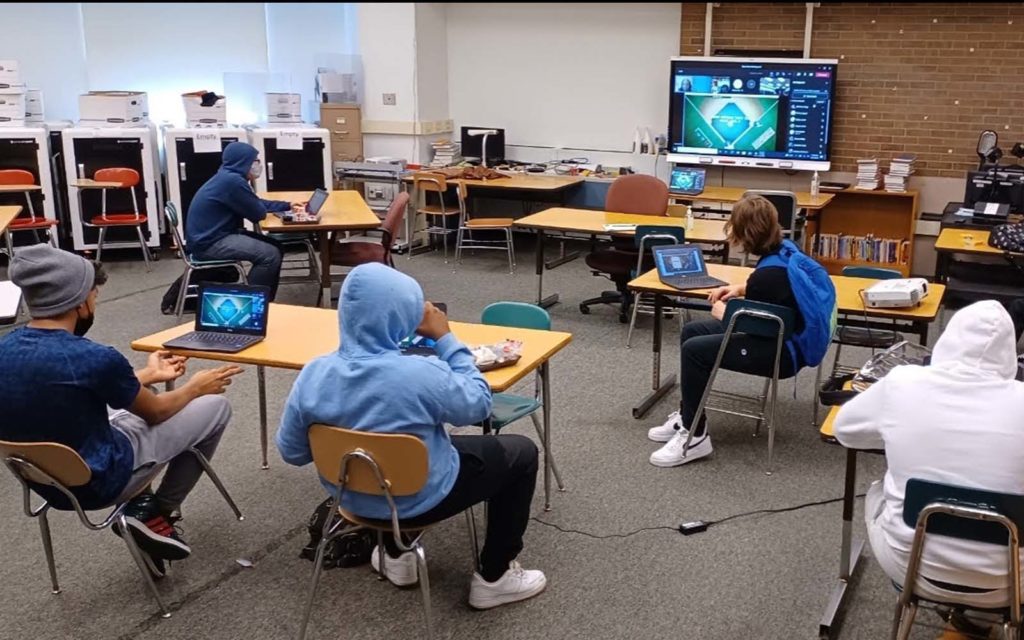

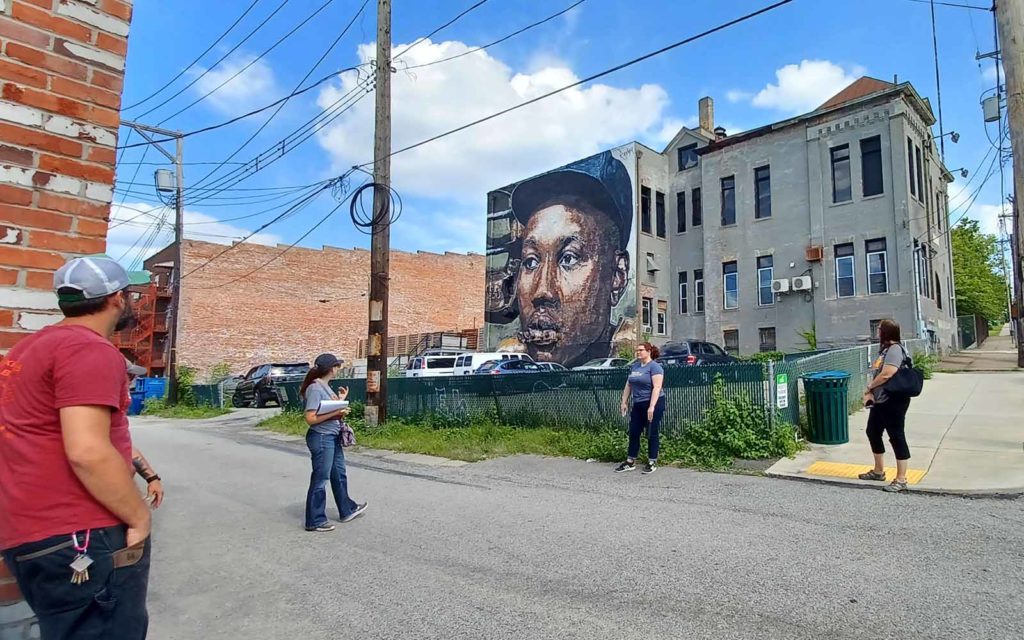
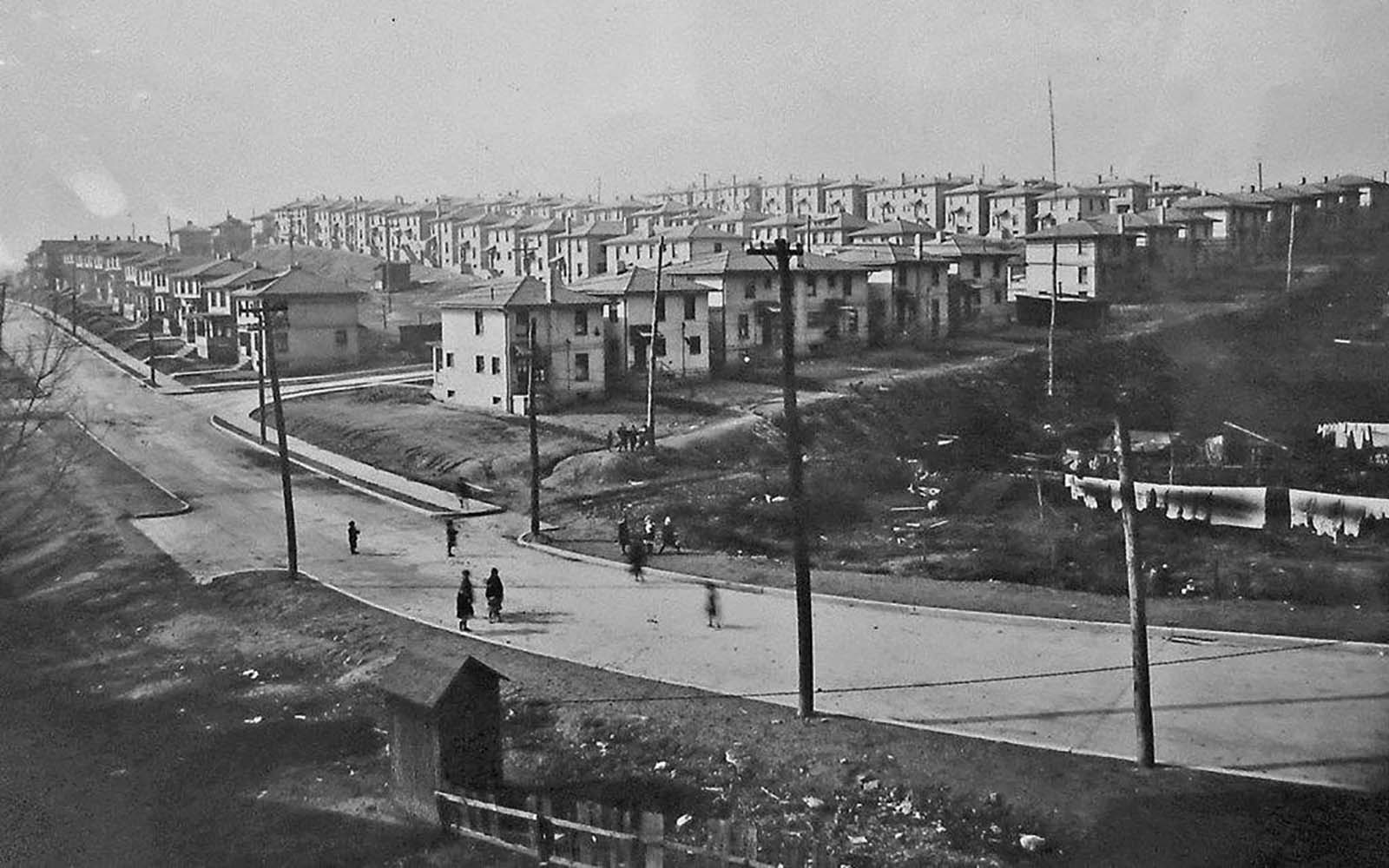
 Donora Historical Society’s Bruce Dreisbach Collection Opens a Window to Everyday Life in the Early 1900s
Donora Historical Society’s Bruce Dreisbach Collection Opens a Window to Everyday Life in the Early 1900s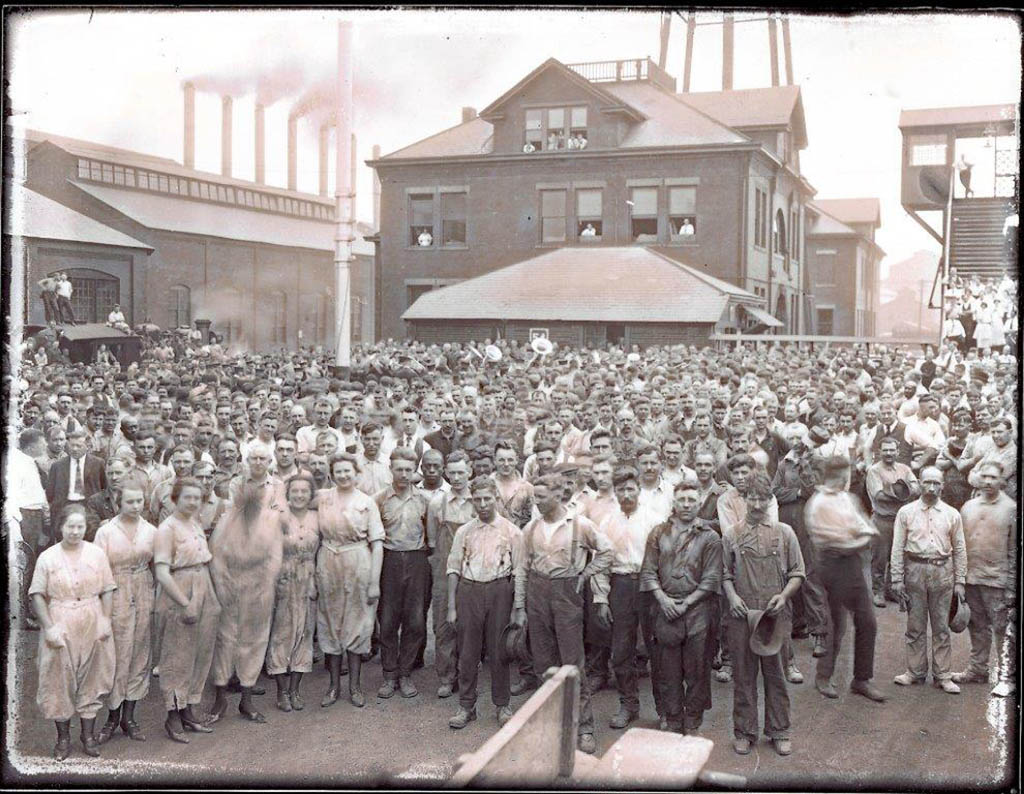
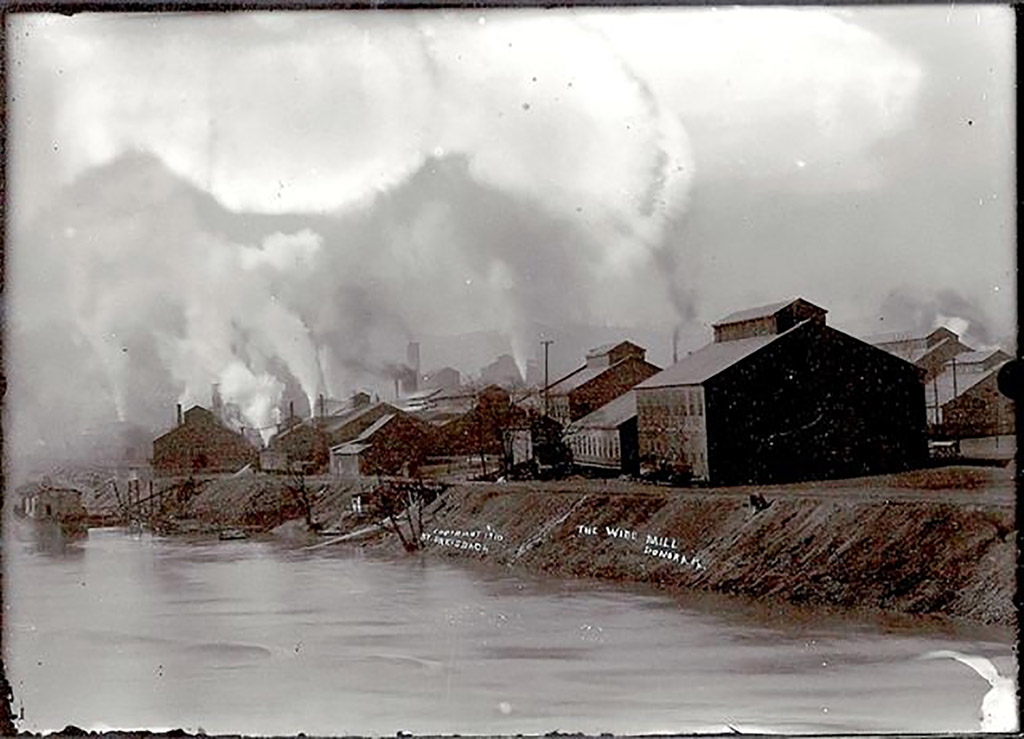
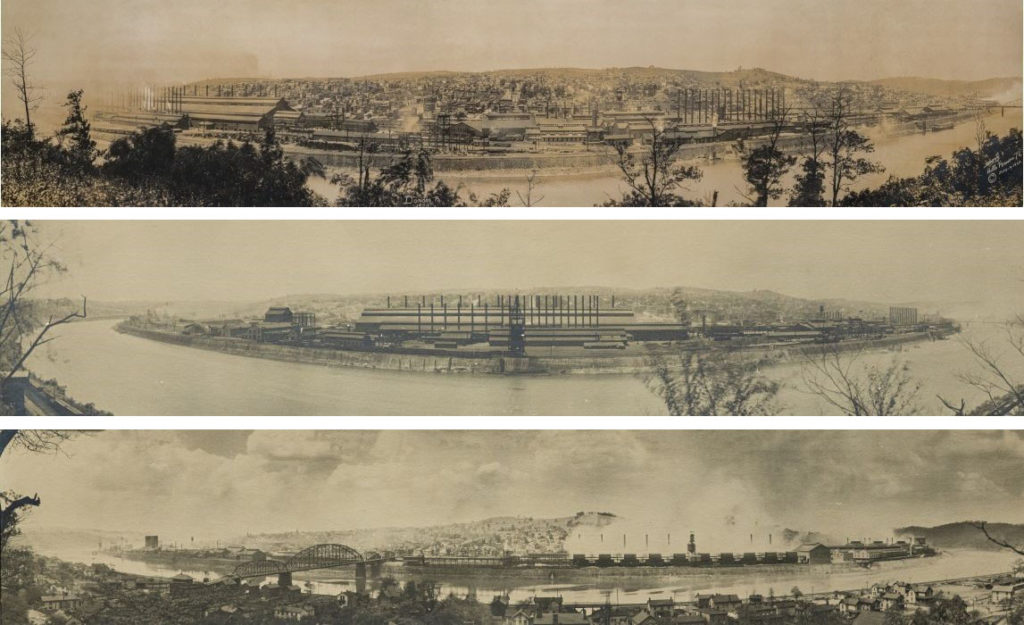
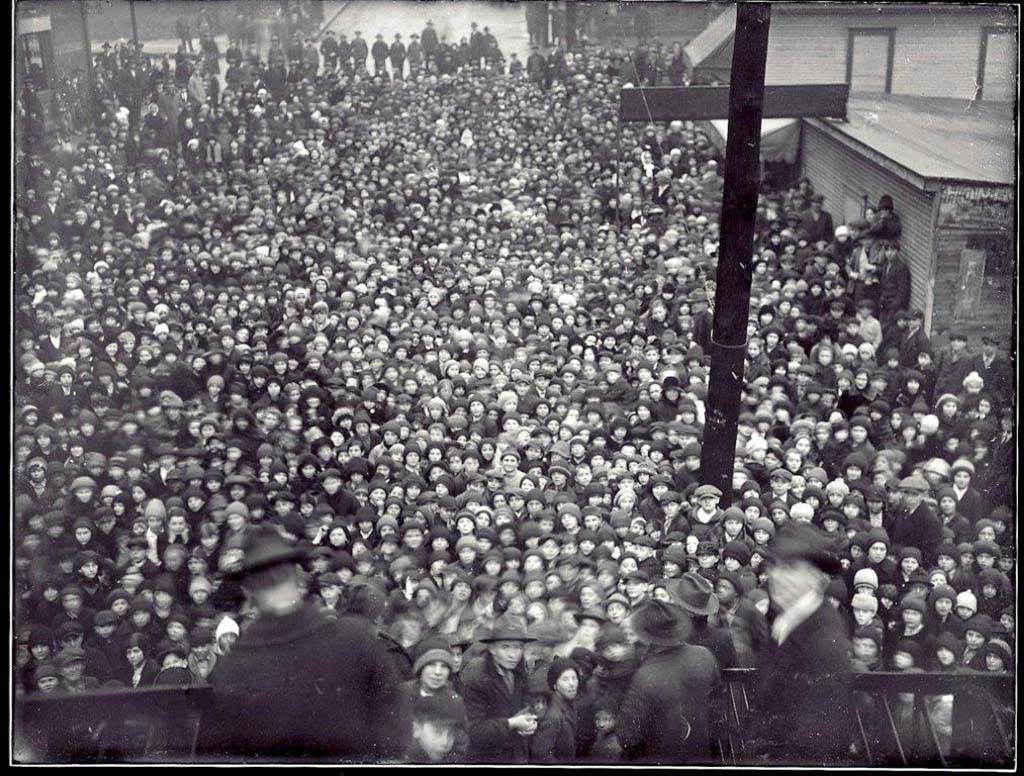
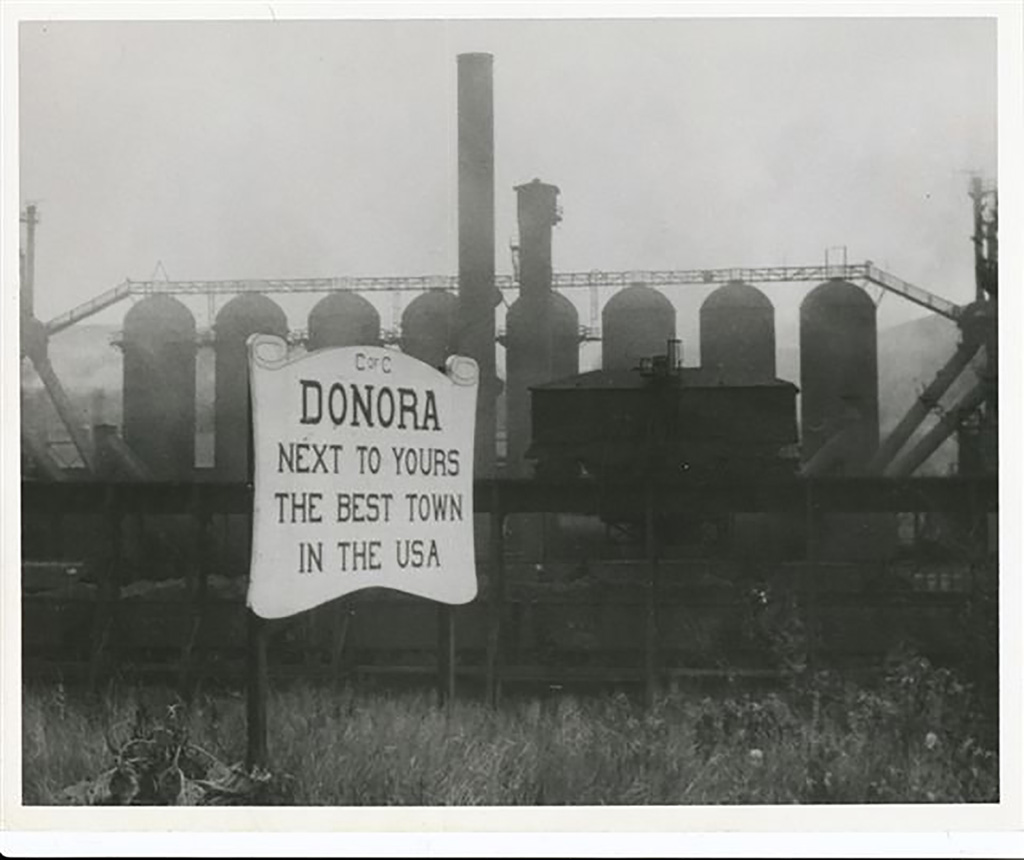 “Rivers of Steel is thrilled to play a part in the long-term conservation of this wonderful collection of glass plate negatives within the Donora Historical Society’s holdings,” said Ron Baraff, the director of historical resources and facilities for Rivers of Steel. “The story that their collection unveils of life in the mill is a wonderful complement to the rich archival holdings preserved by Rivers of Steel and other area repositories. Partnerships such as these, through our mini-grant program and regional cooperation, allow for all of us to tell, more succinctly, the enduring industrial and cultural history of our region and its legacies’ impact on the nation—and the world.”
“Rivers of Steel is thrilled to play a part in the long-term conservation of this wonderful collection of glass plate negatives within the Donora Historical Society’s holdings,” said Ron Baraff, the director of historical resources and facilities for Rivers of Steel. “The story that their collection unveils of life in the mill is a wonderful complement to the rich archival holdings preserved by Rivers of Steel and other area repositories. Partnerships such as these, through our mini-grant program and regional cooperation, allow for all of us to tell, more succinctly, the enduring industrial and cultural history of our region and its legacies’ impact on the nation—and the world.”